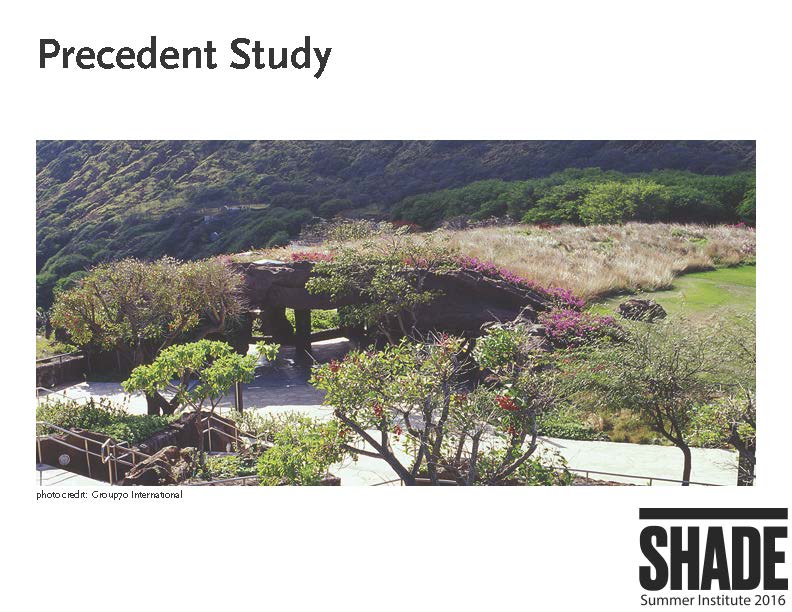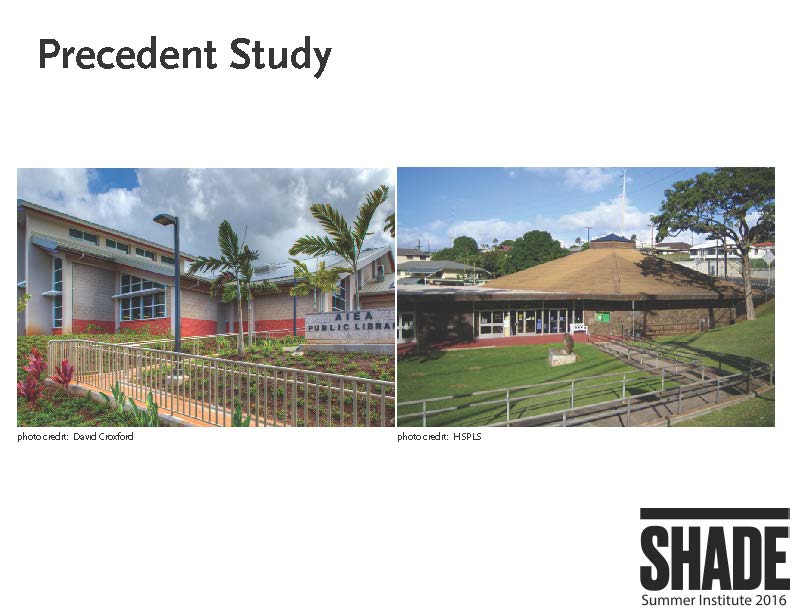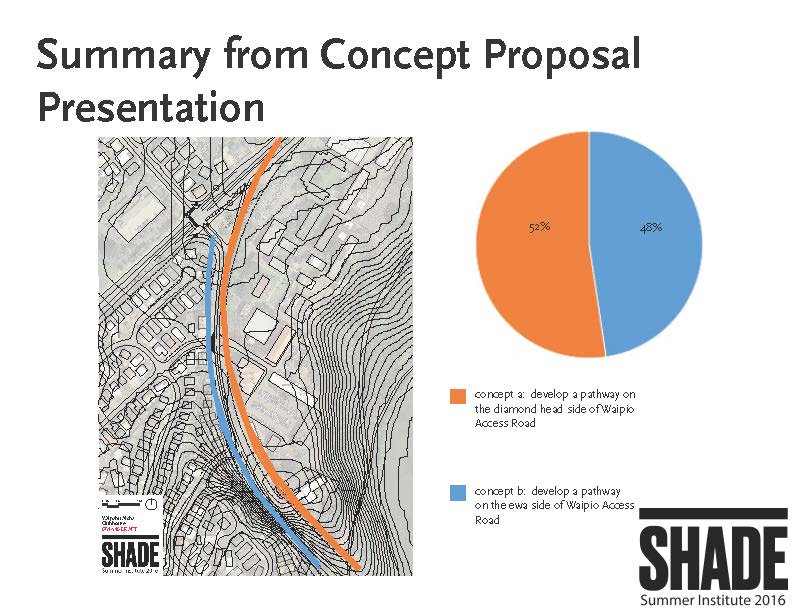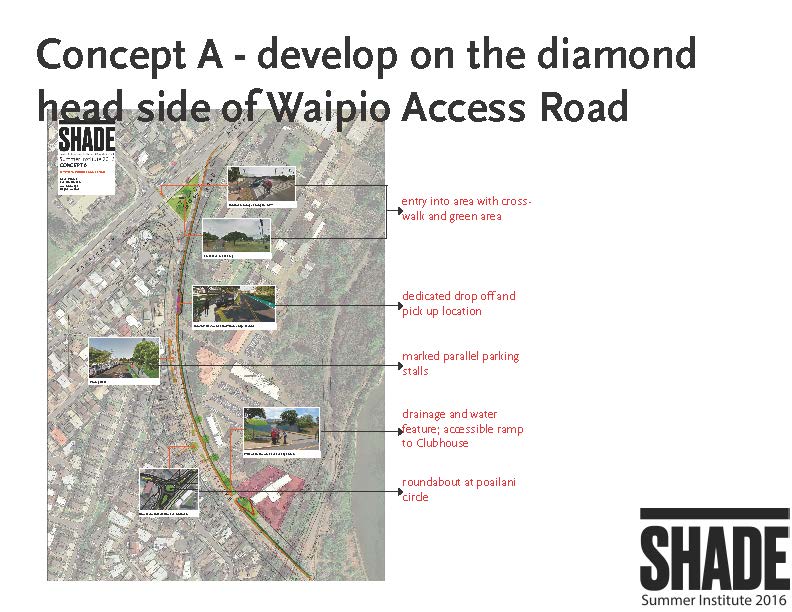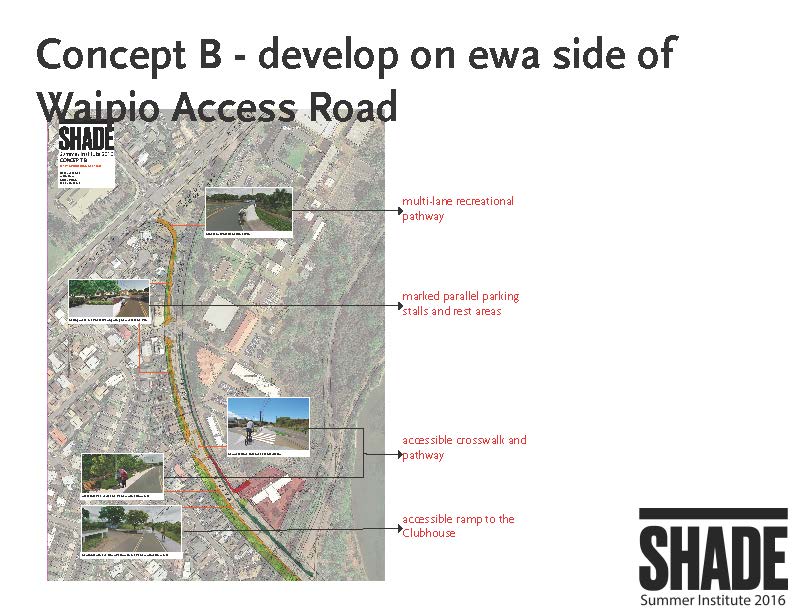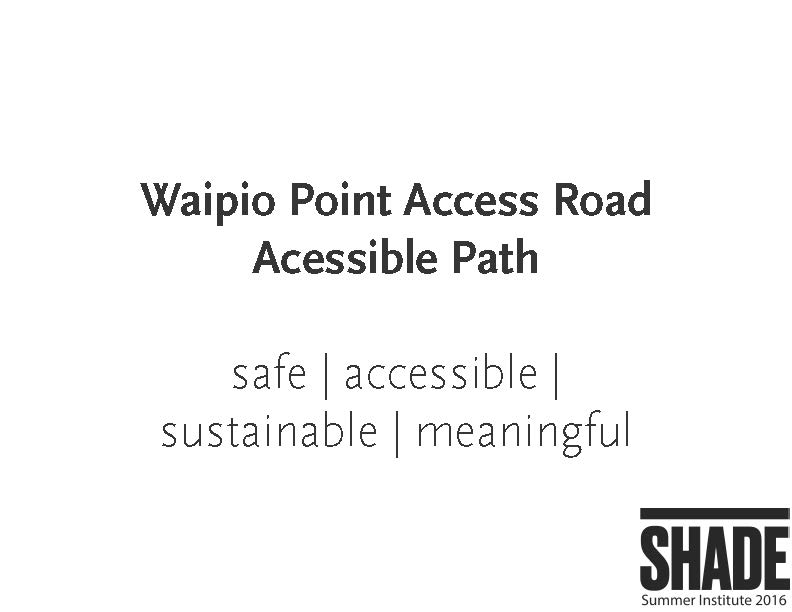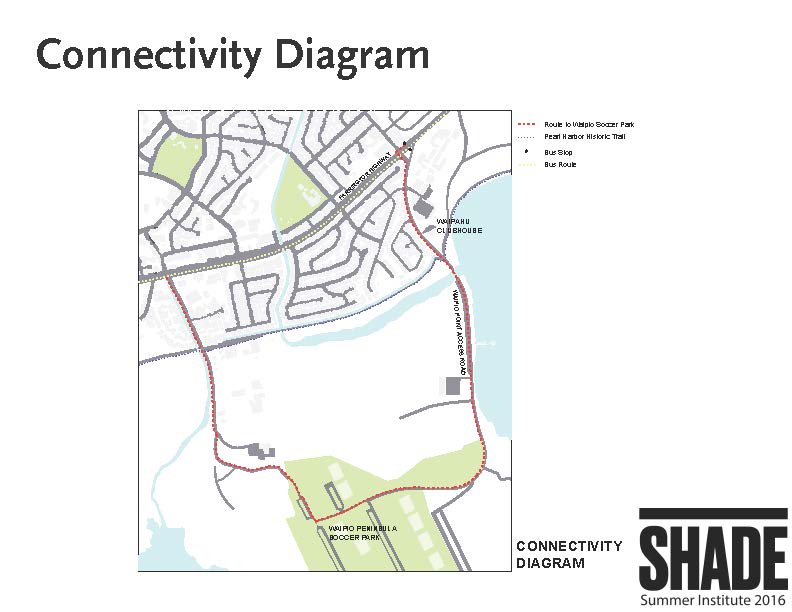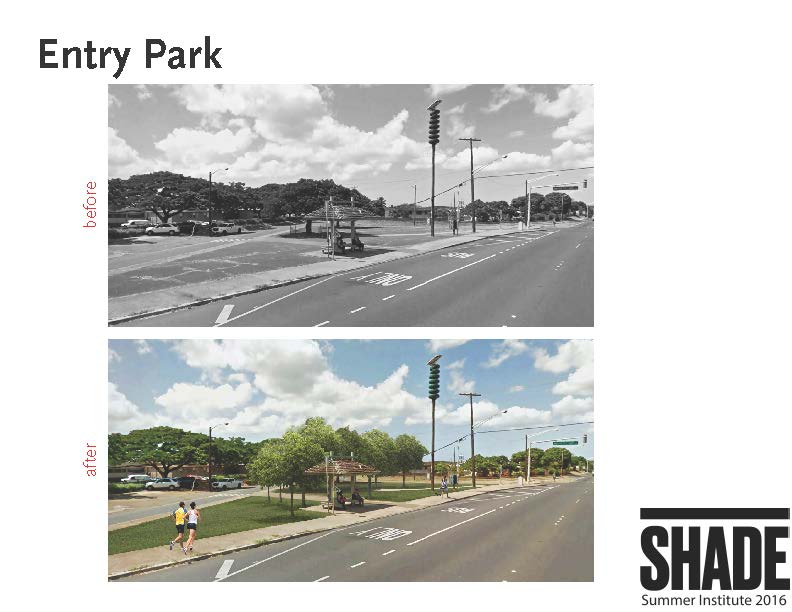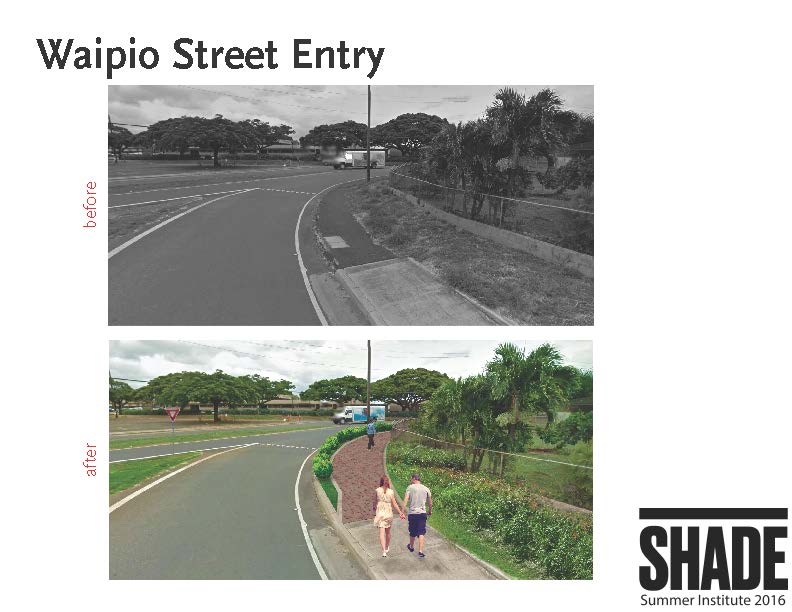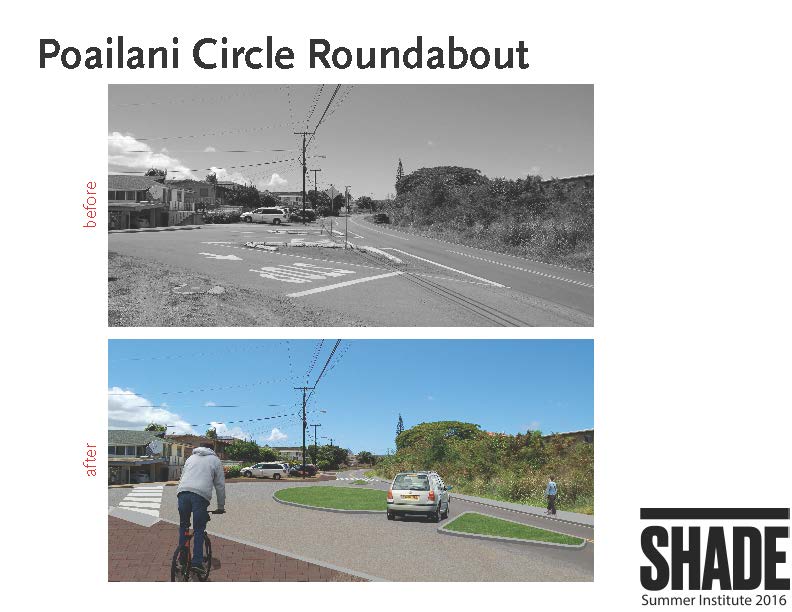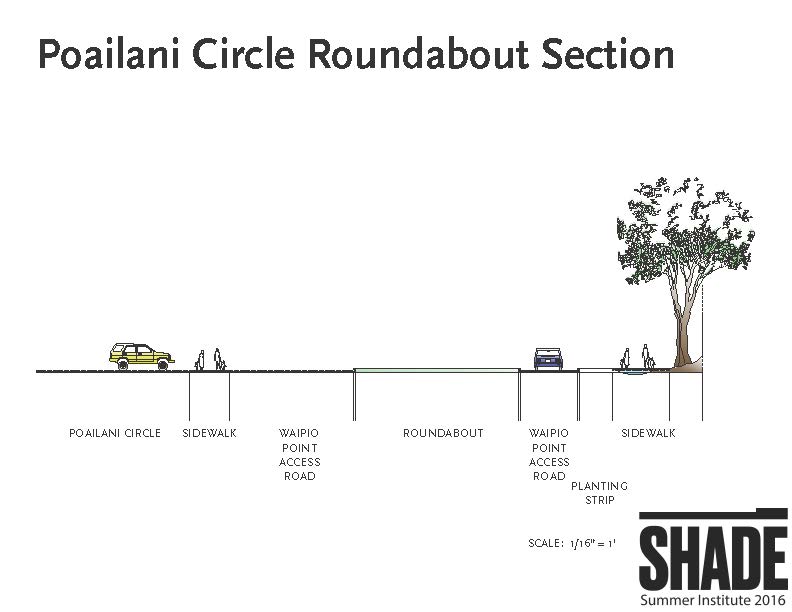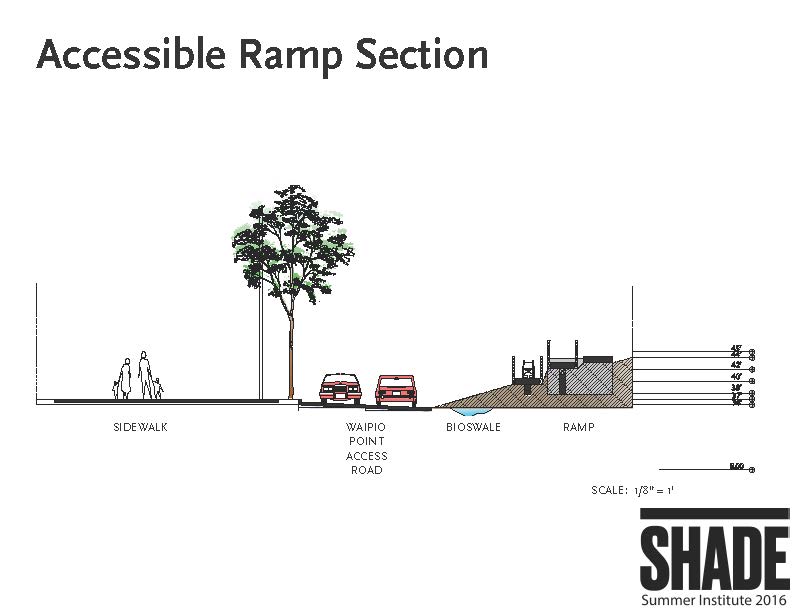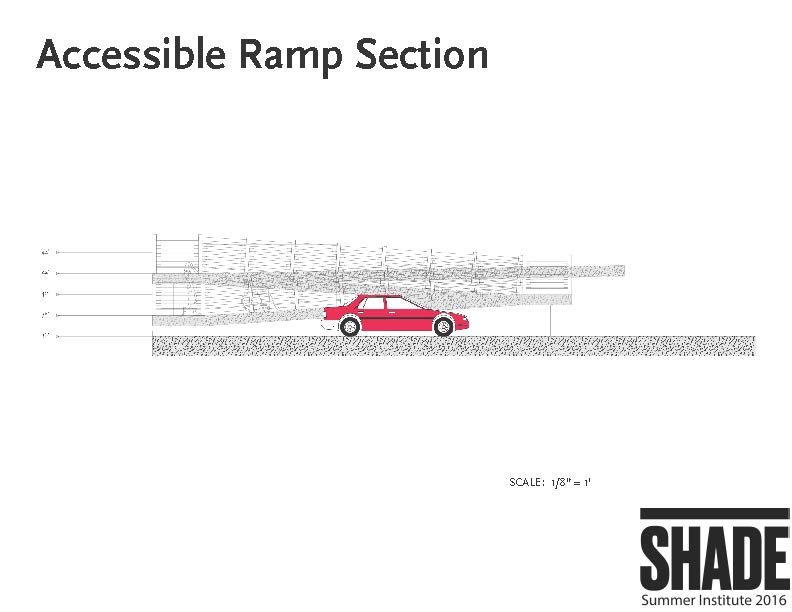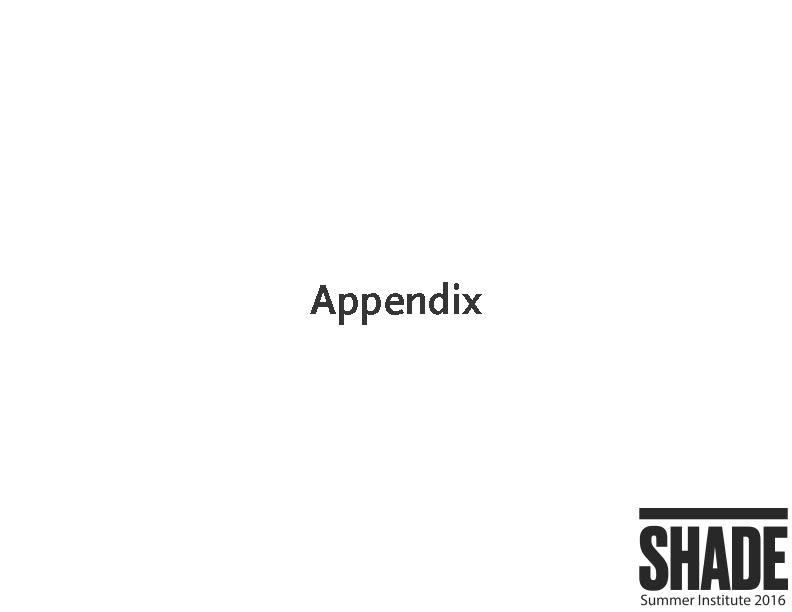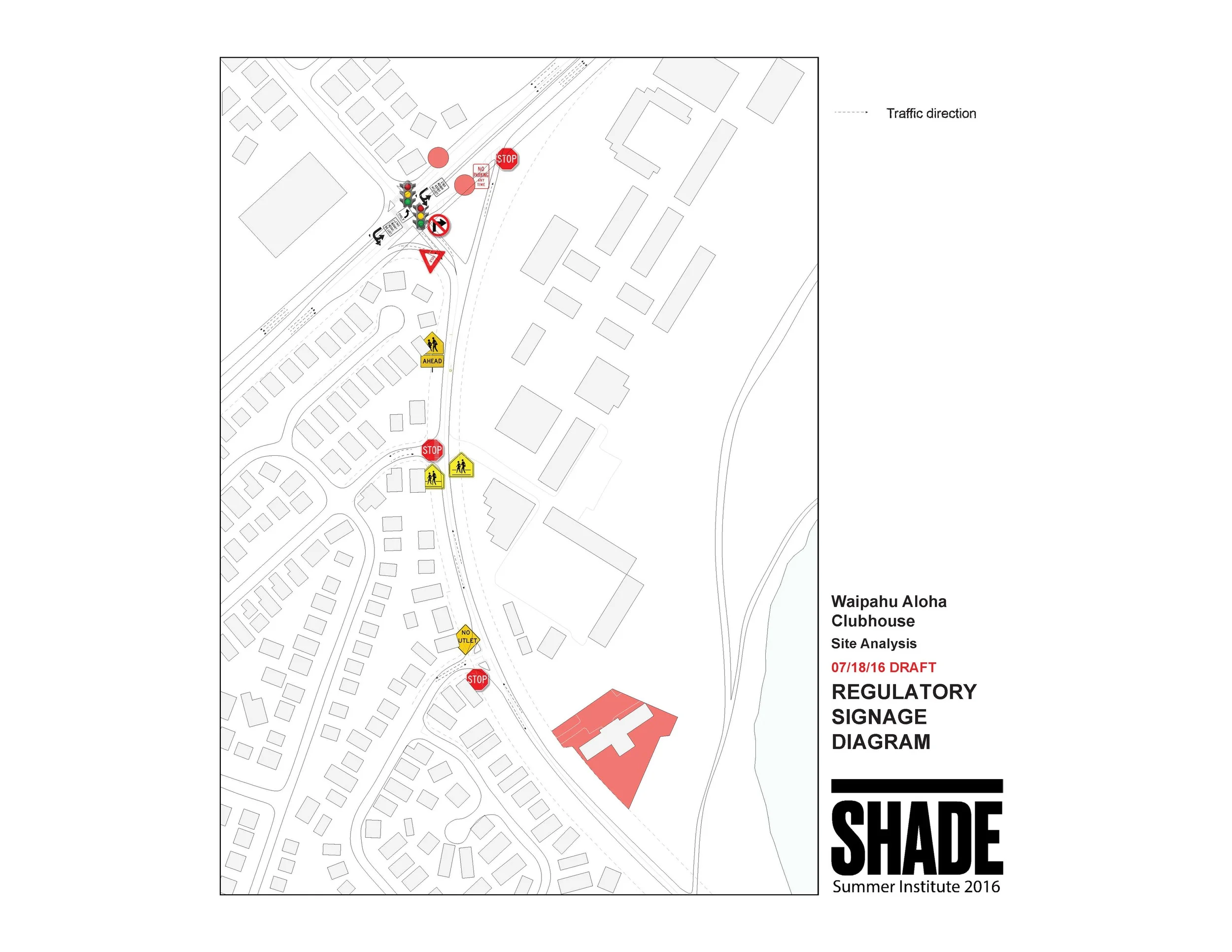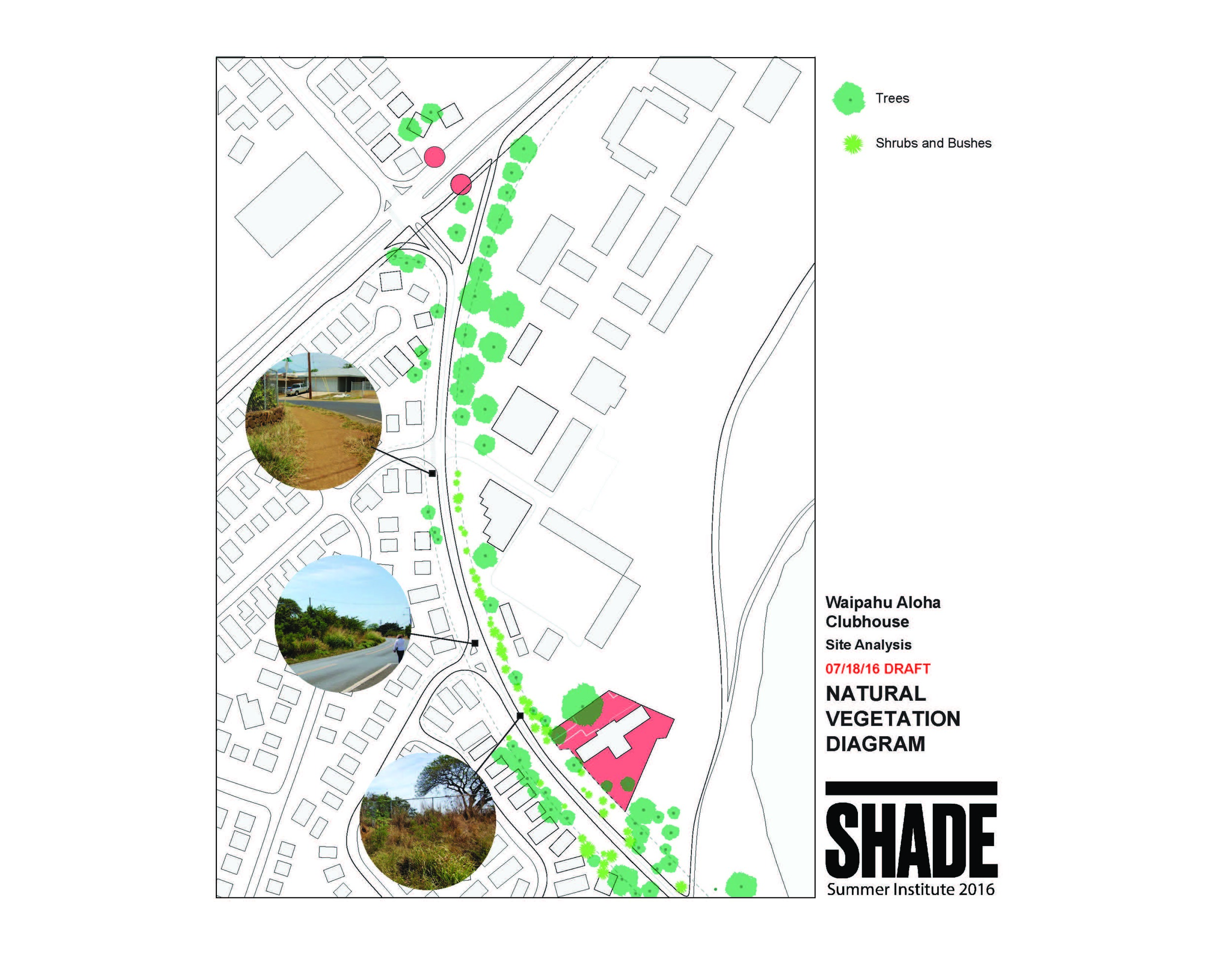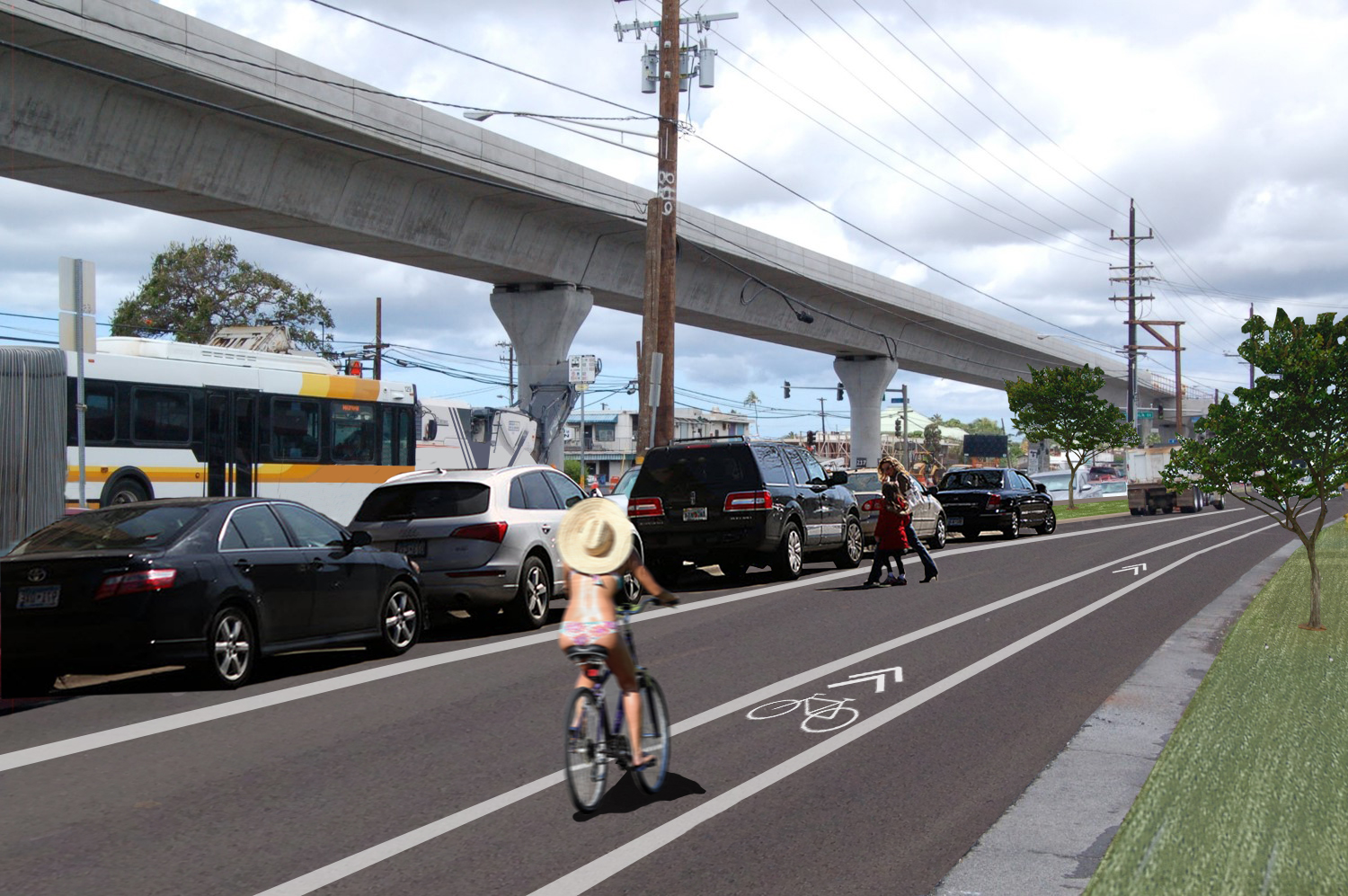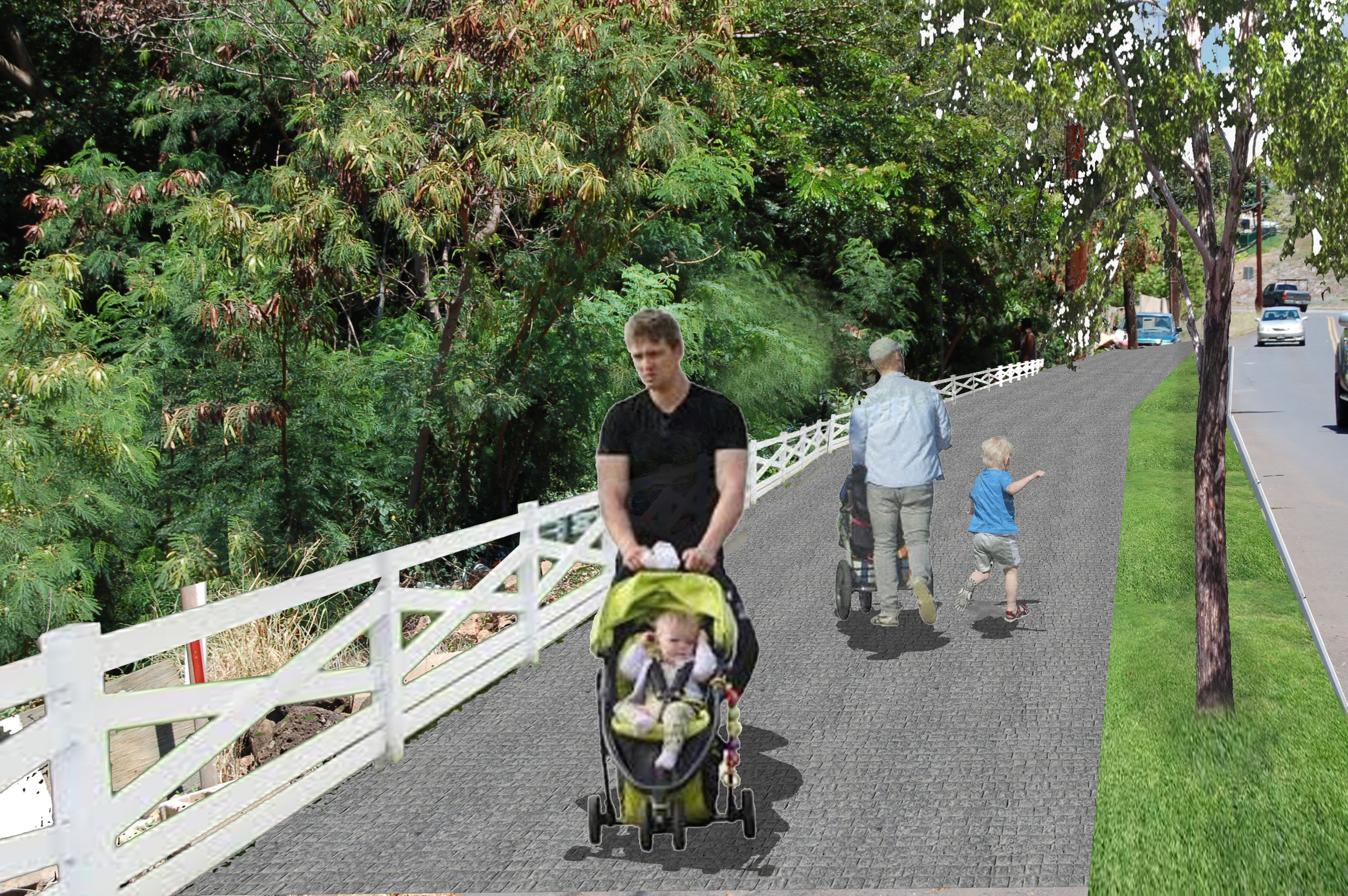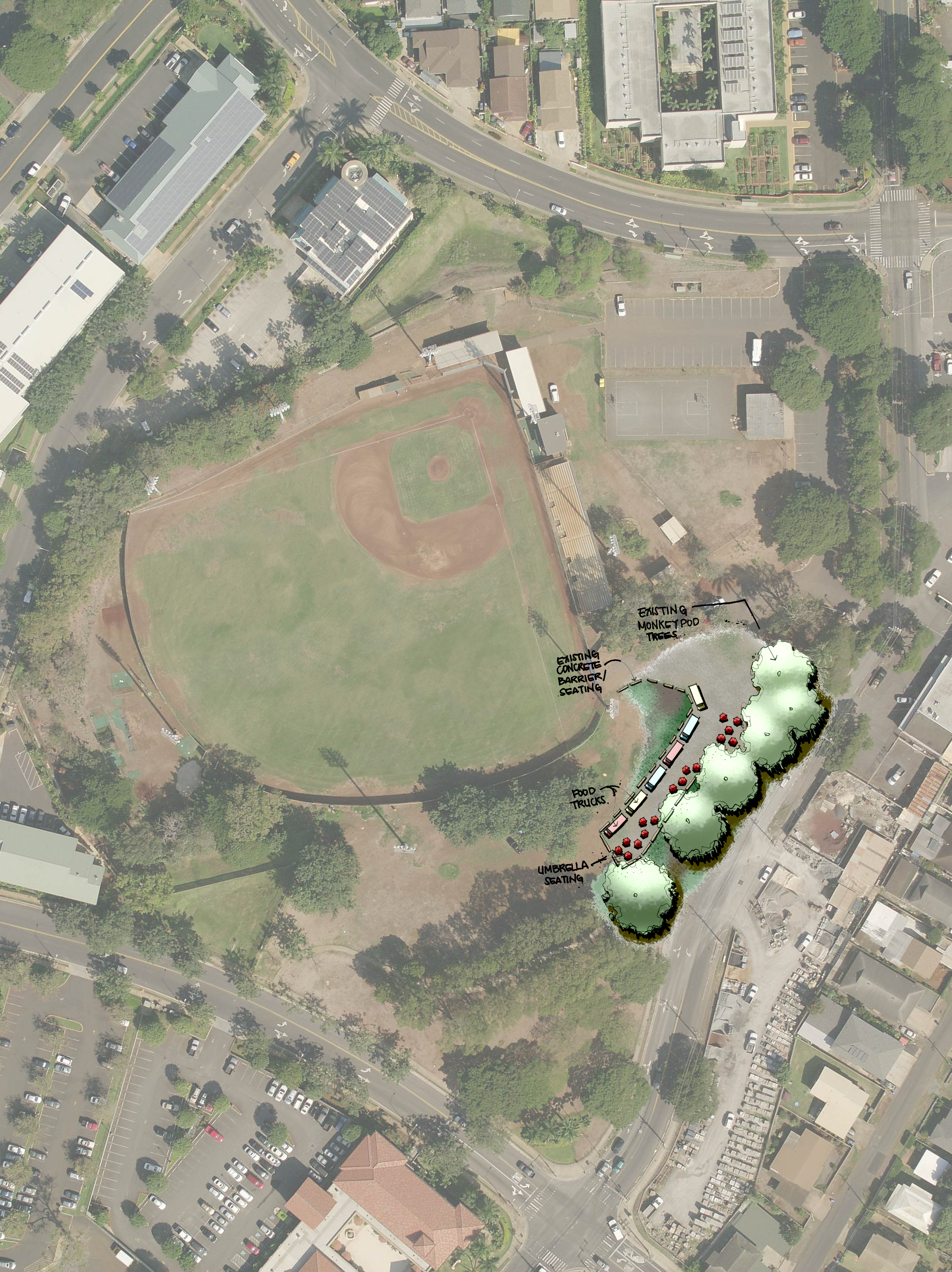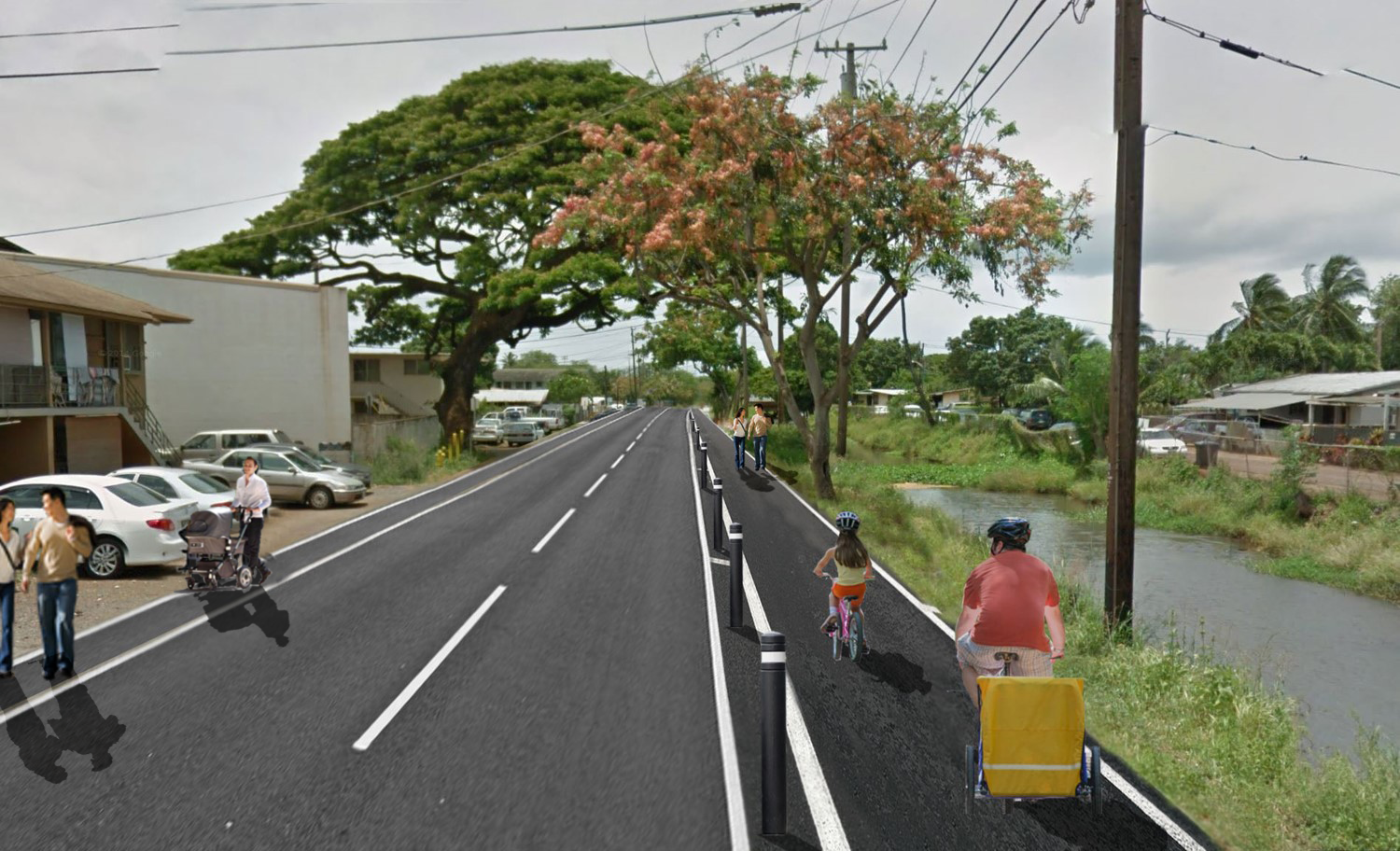In Hawaiian, the word kāpili means “unite” or “put together.” We strive to strengthen bonds within the community through planning and design. SHADE Institute’s long-time Kāpili Waipahu effort is a collaborative process seeking to address the town’s critical issues, identify community assets, and work with stakeholders to shape Waipahu’s future identity. In order to determine which types of future development would benefit the Waipahu community, SHADE continues to explore different methods that support the values and principles of public interest design. These methods include:
Public/private partnerships
Community design playbook
SEED (Social Economic Environmental Design) evaluator
Special interest groups
Community design workshops
SHADE Institute’s Kāpili Waipahu projects include the Waipi’o Point Access Road Multimodal Pathway.
KAPILI WAIPAHU TIMELINE:
2020 SUMMER INSTITUTE
In July, 2020, the SHADE Institute hosted a virtual community design workshop to gather community input on the Waipi’o Point Access Road Multimodal Pathway & Safety Improvement Project. The team shared preliminary design updates and asked stakeholders like local residents, Aloha Clubhouse members, and Waipahu High School administrators and students about their visions for the site.
2017 FALL INSTITUTE
This fall, SHADE Institute organized a Community Design Workshop which took place on September 26th, 2017 at the Filipino Community Center (FILCOM) located in Waipahu Town. The intent of the event was to introduce SHADE as a community advocate and support towards the creation of a community-based plan for the town of Waipahu with the advent and presence of the new RAIL transit system.
Workshop attendees gathering around Waipahu Town model
Waipahu Community Design Workshop
Waipahu Town model also used as a game board for "Talk Story" game
Talk Story: Your Community Design Game
Teams answer 'Talk Story' game questions by writing on the cards and locating responses on the map.
As part of this premiere interaction within the community of Waipahu and with the long-
term goal of formulating a community based plan, a portion of the workshop was assigned to SHADE Institute Fellows to develop, fabricate and carry out an interactive community design game with the primary objective of gathering valuable place-specific information about Waipahu Town. The intent of the design of the game board was to be able to (1) play the game planned for this premier workshop event and (2) also act as a valuable tool for future information gathering, design and planning efforts.

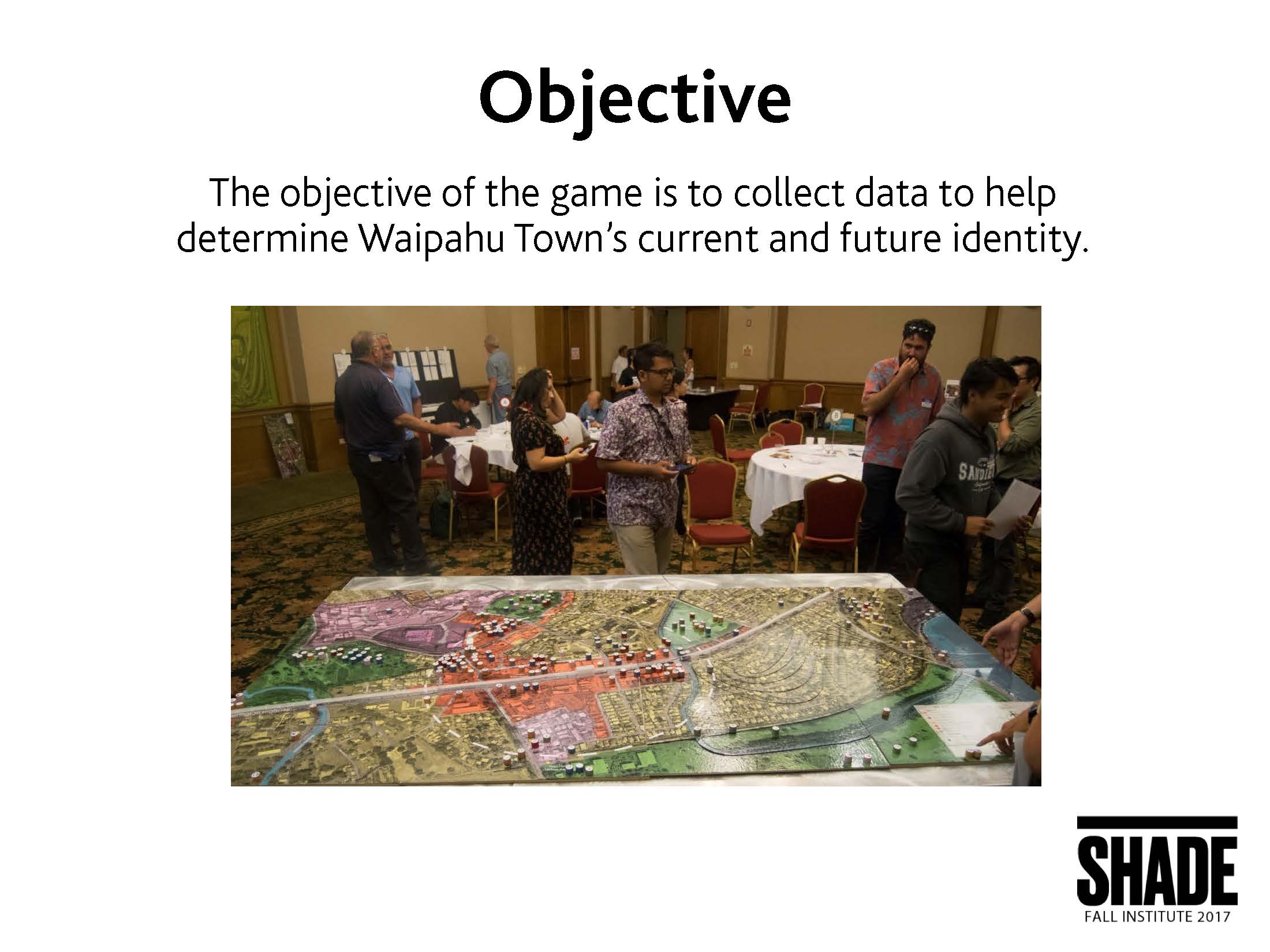
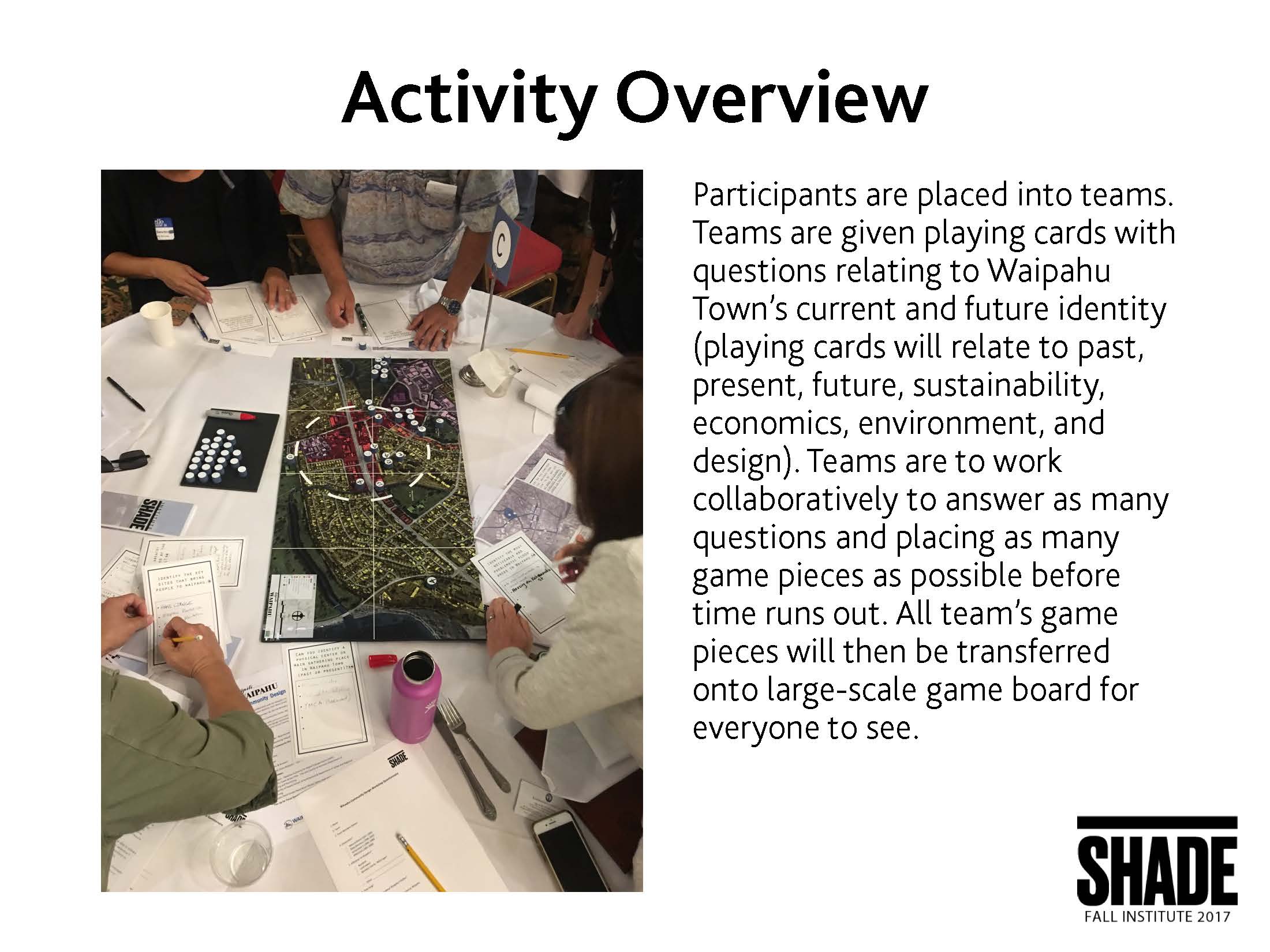
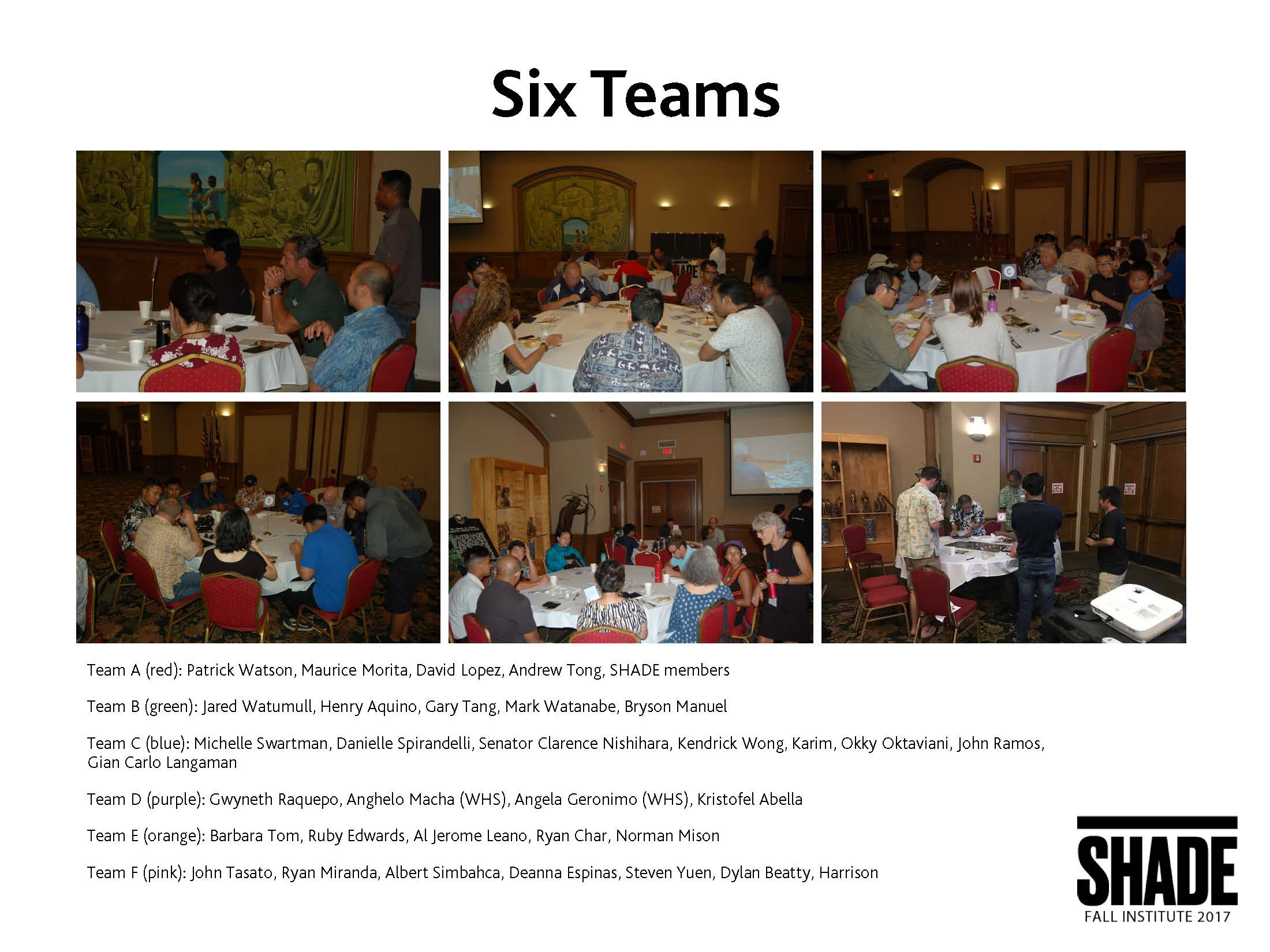
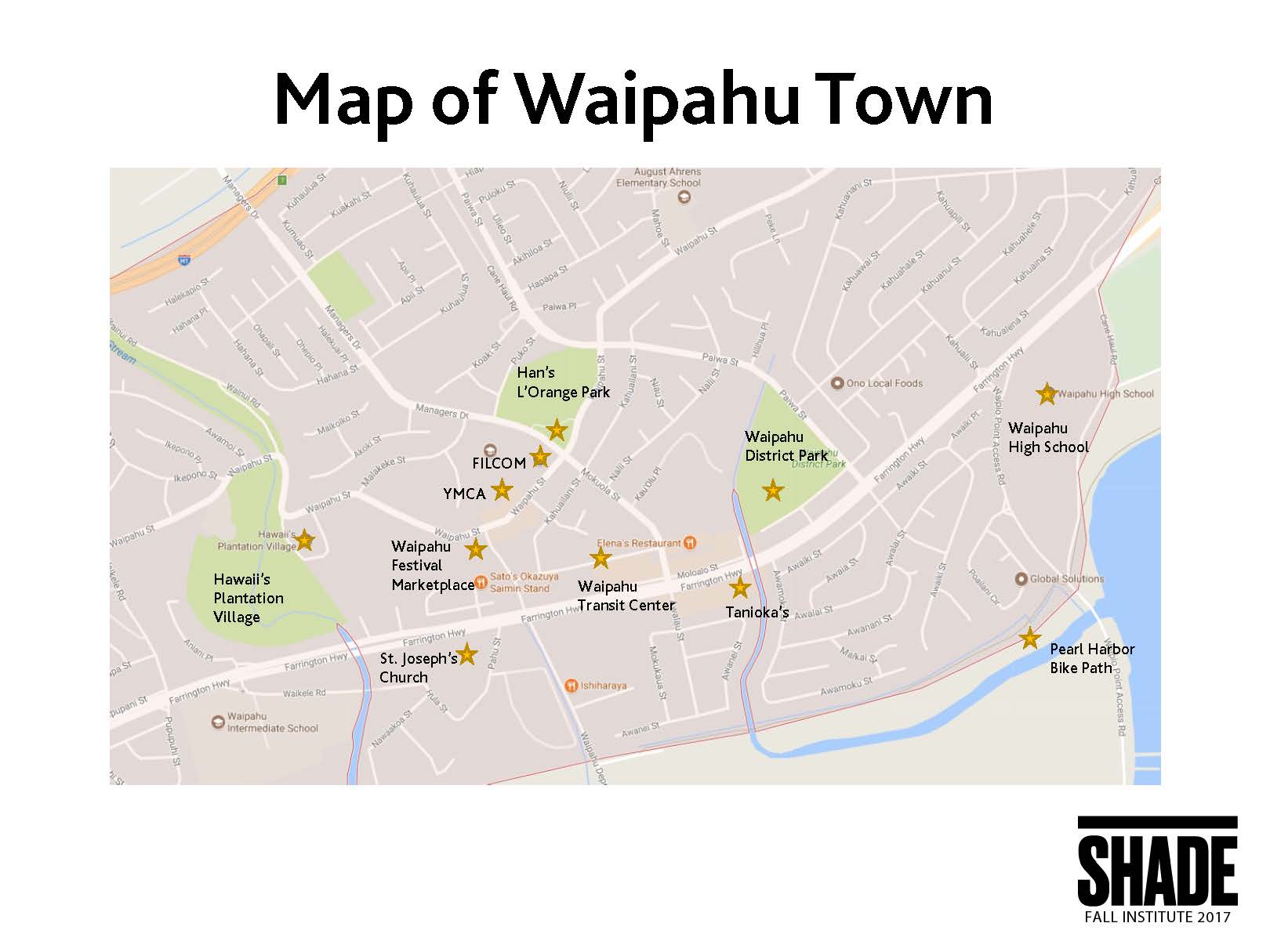

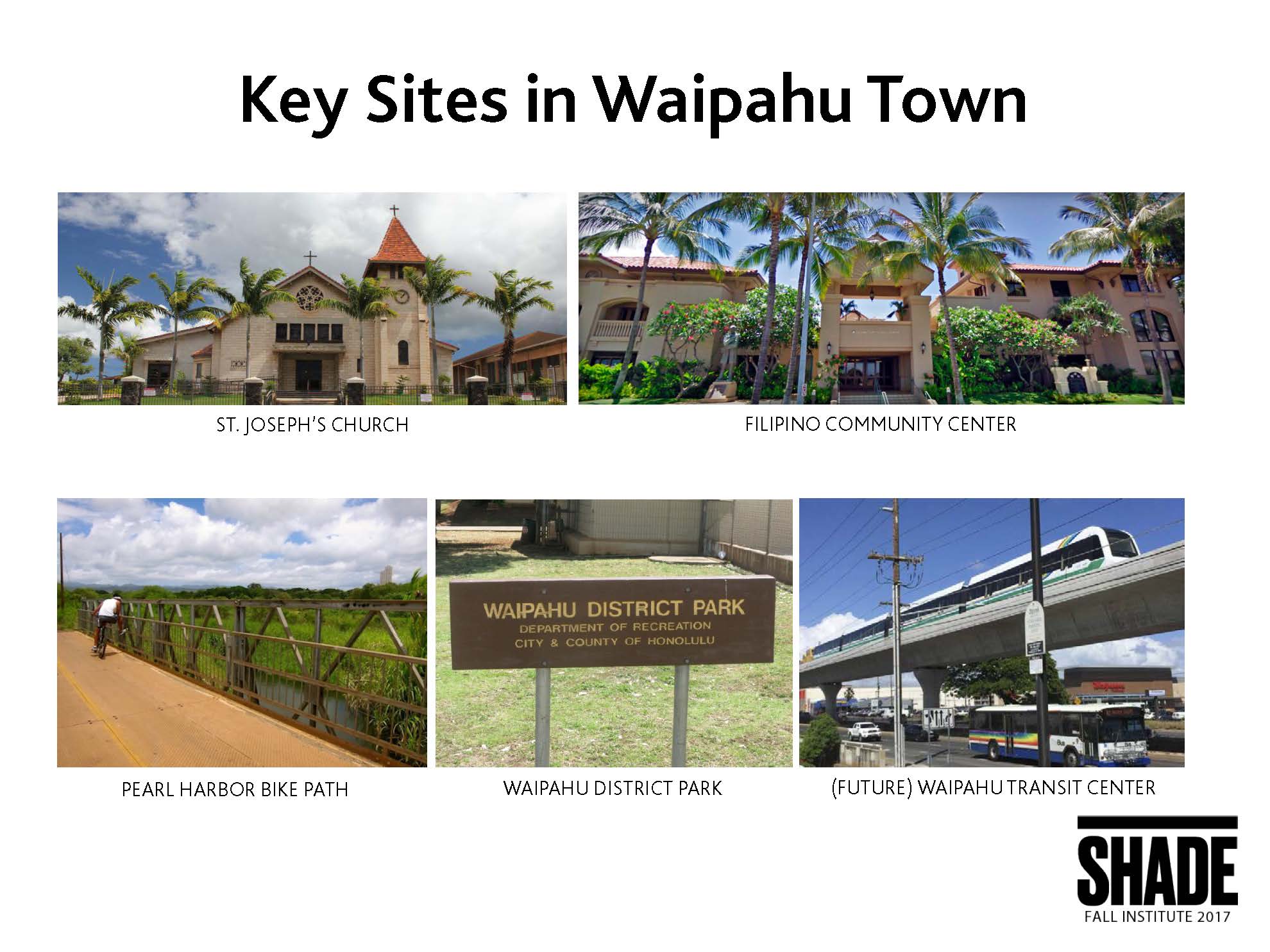
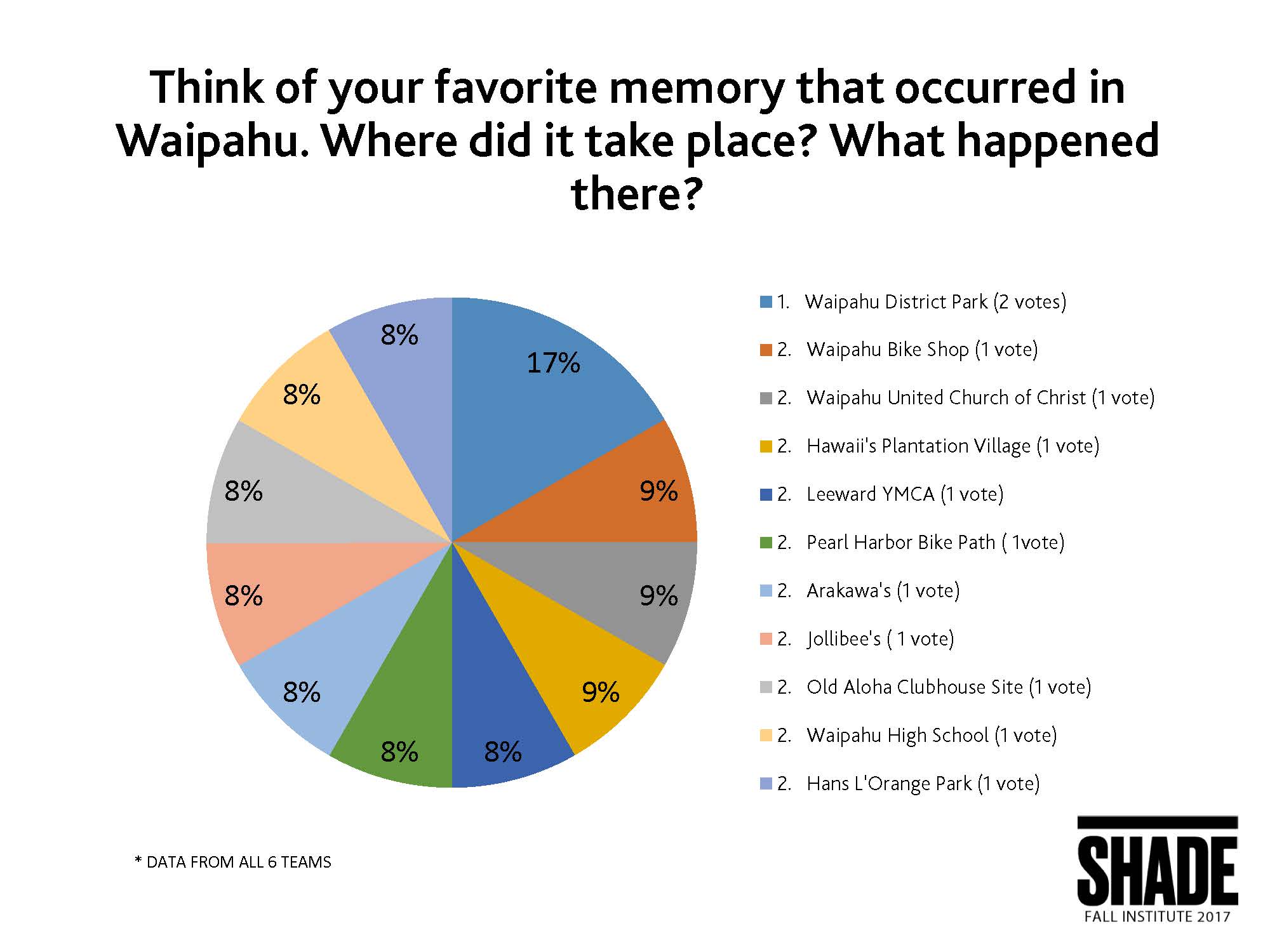
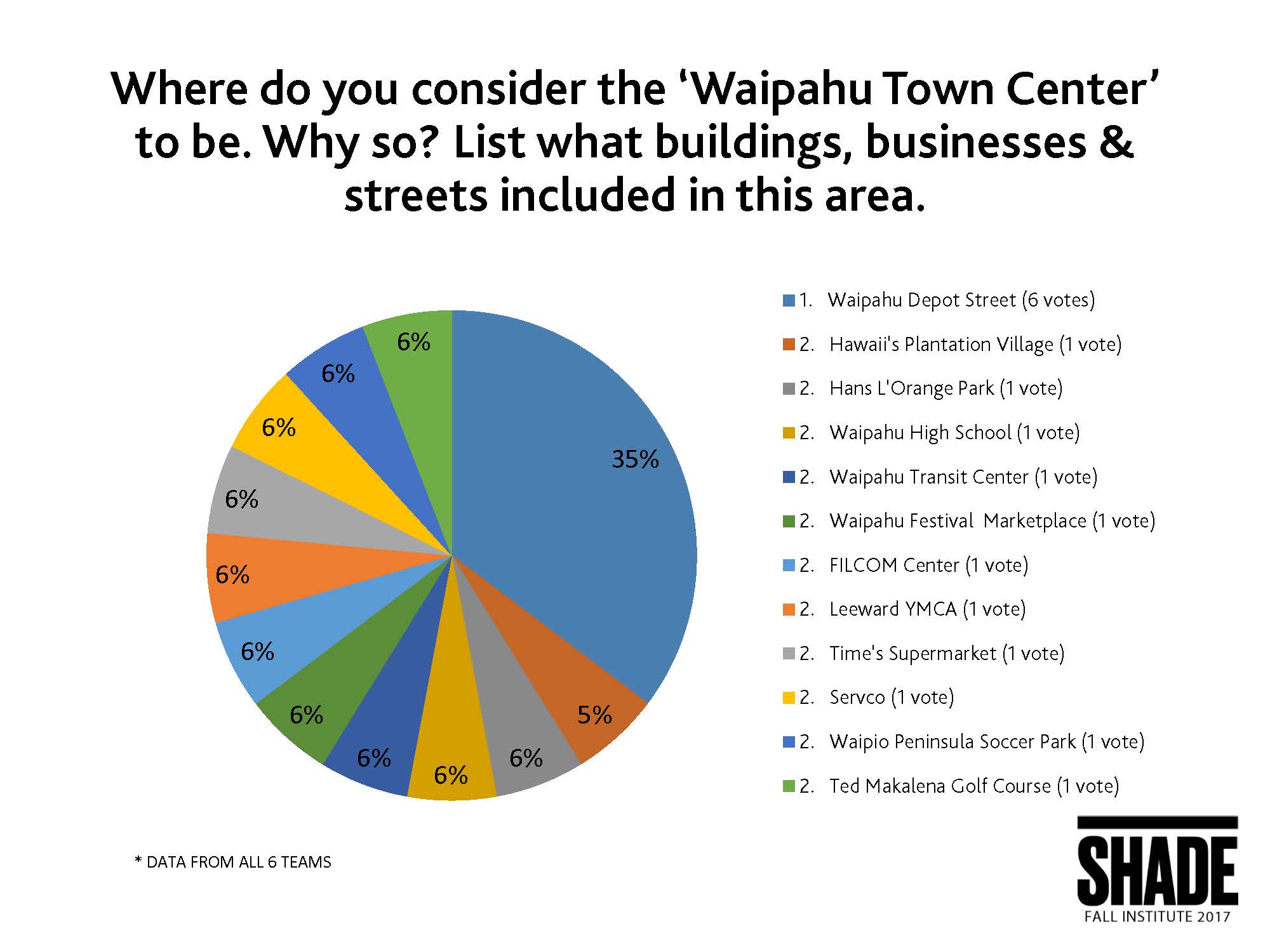

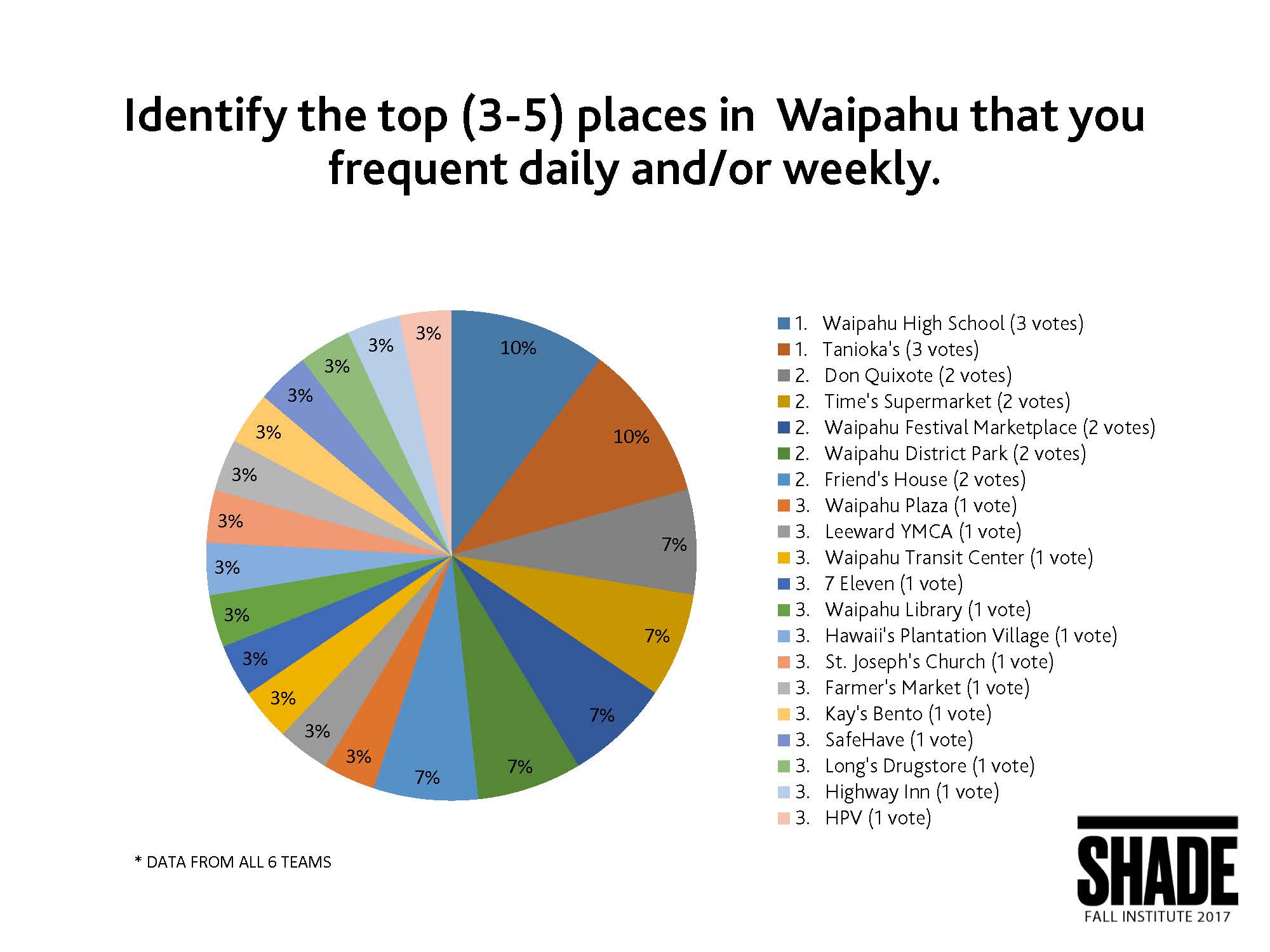

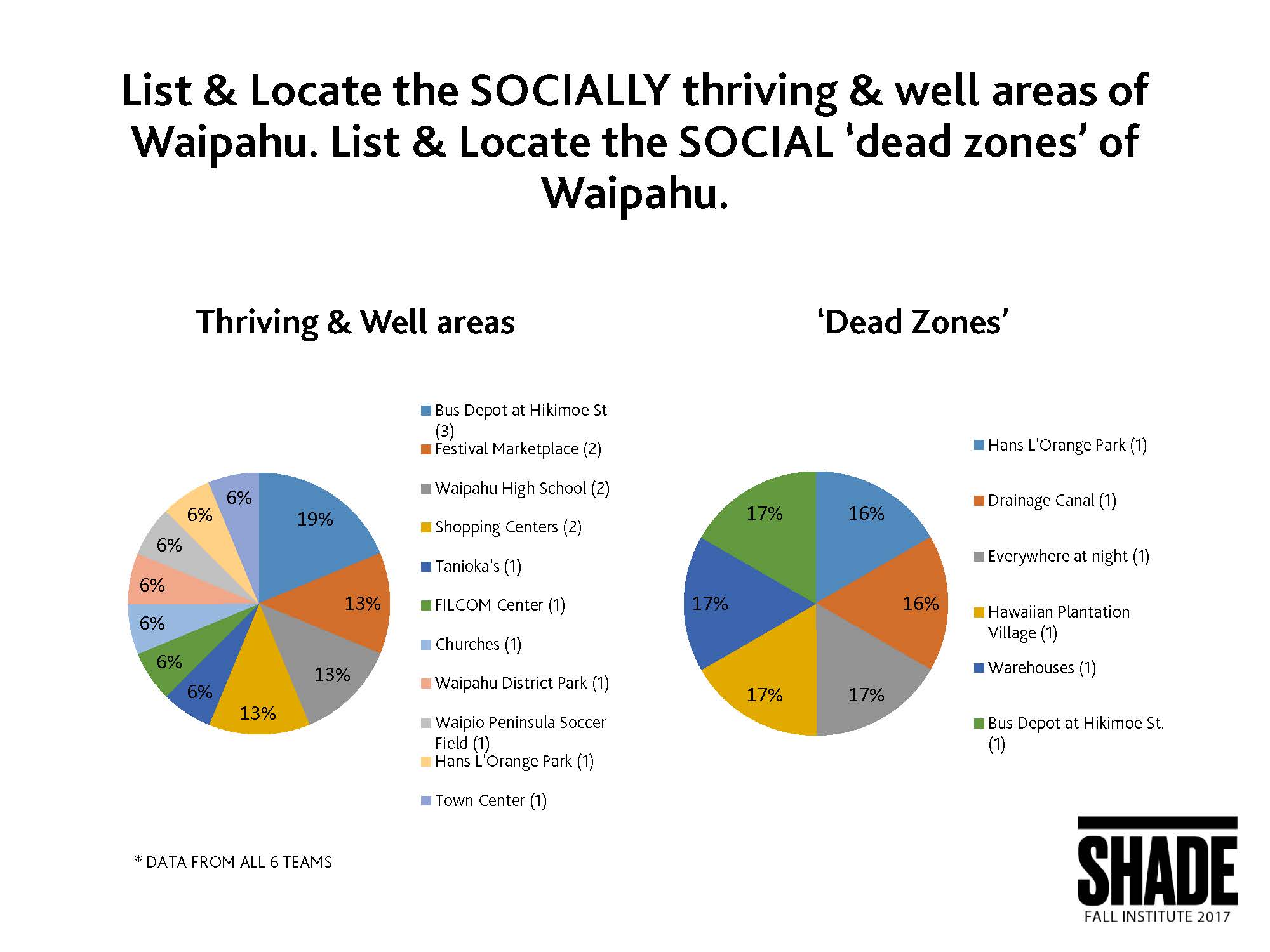

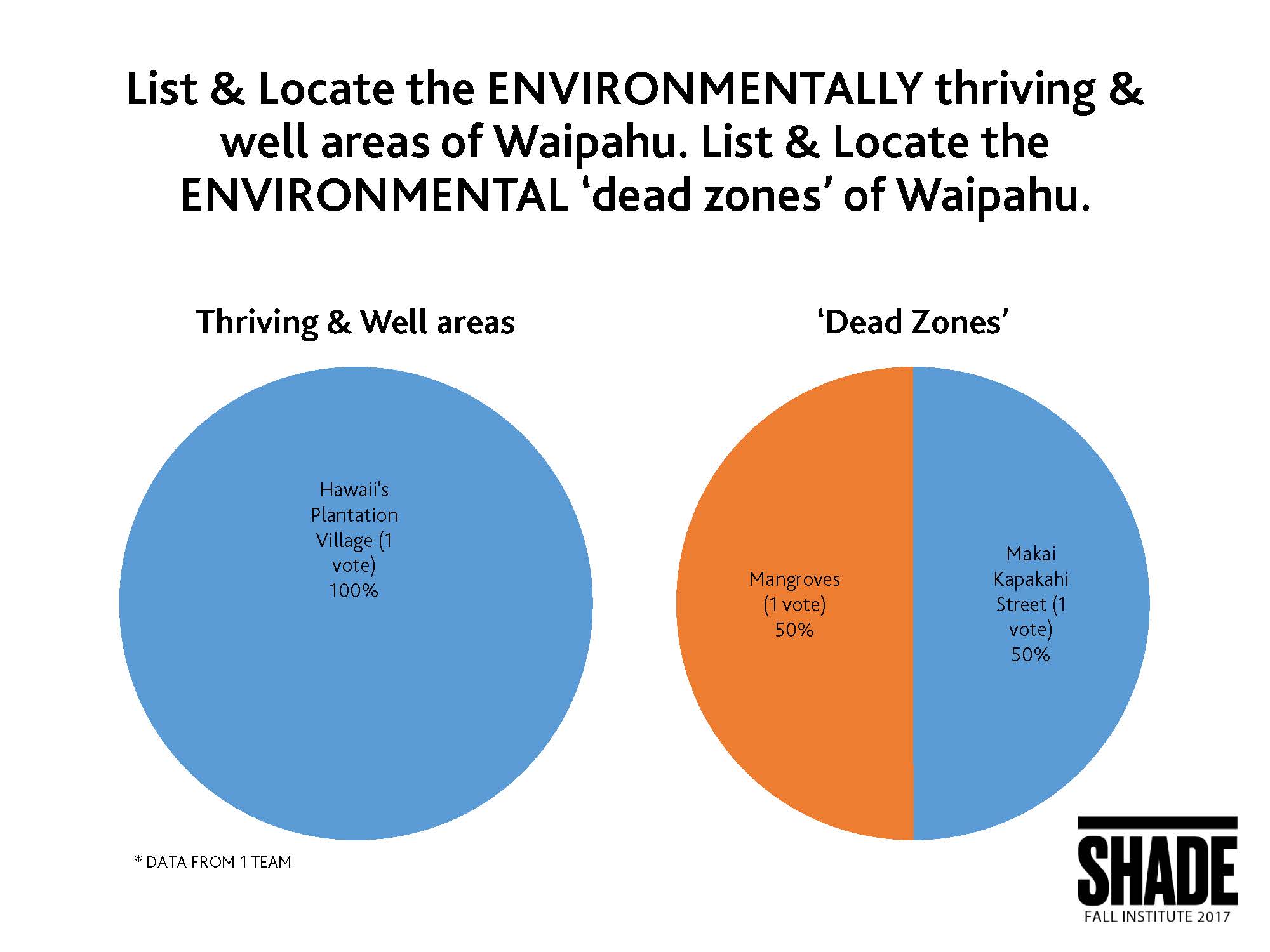
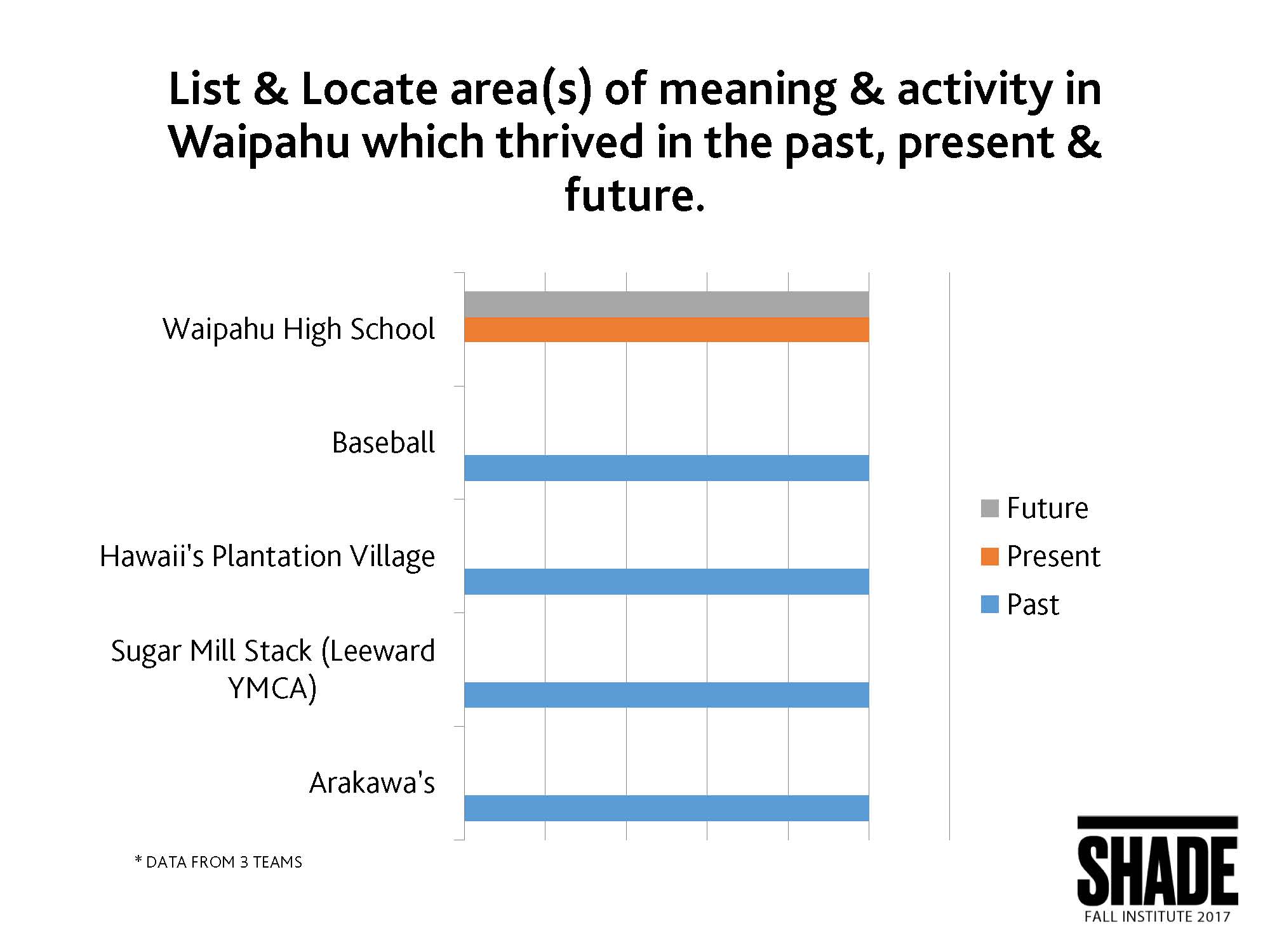

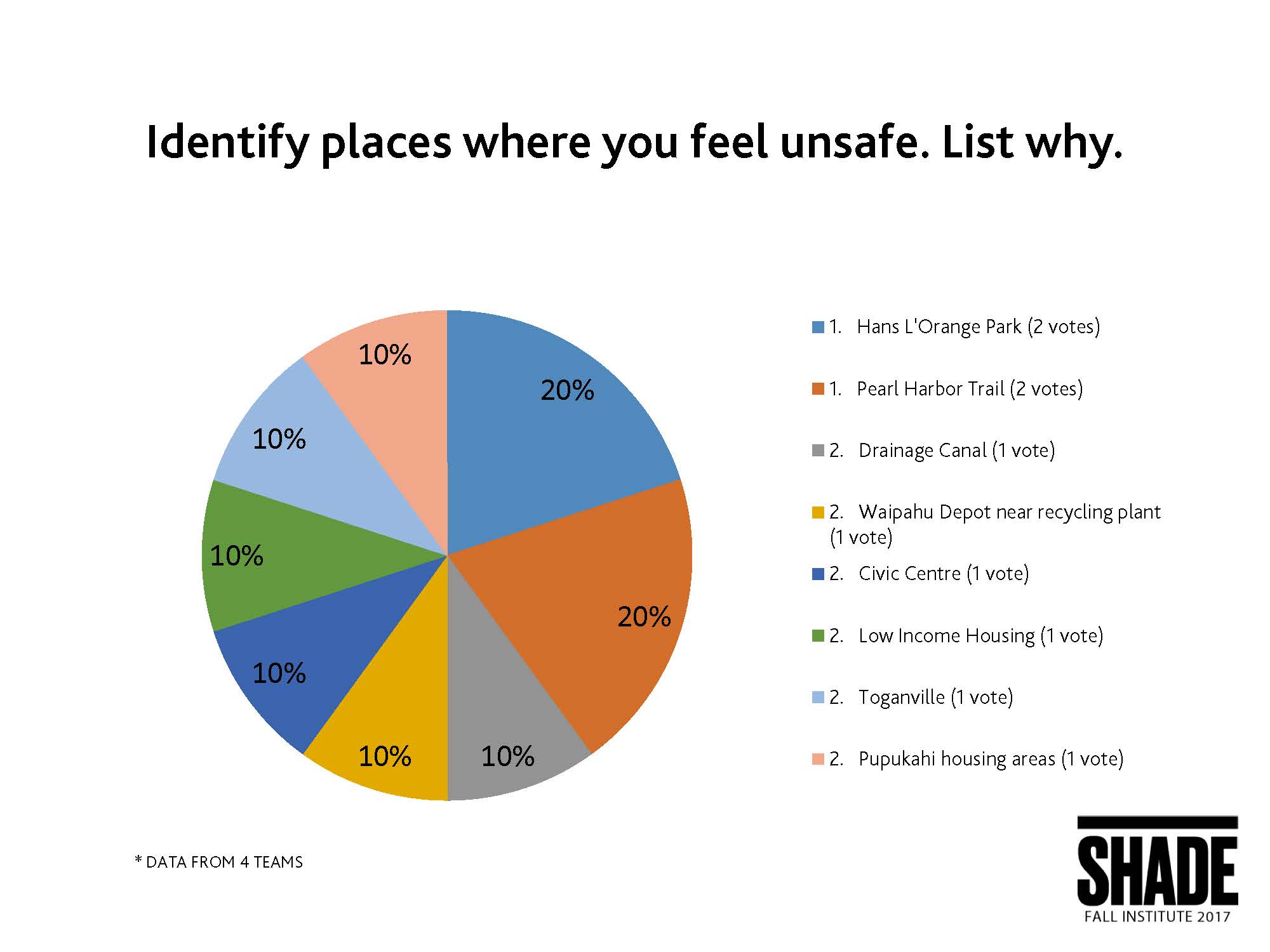
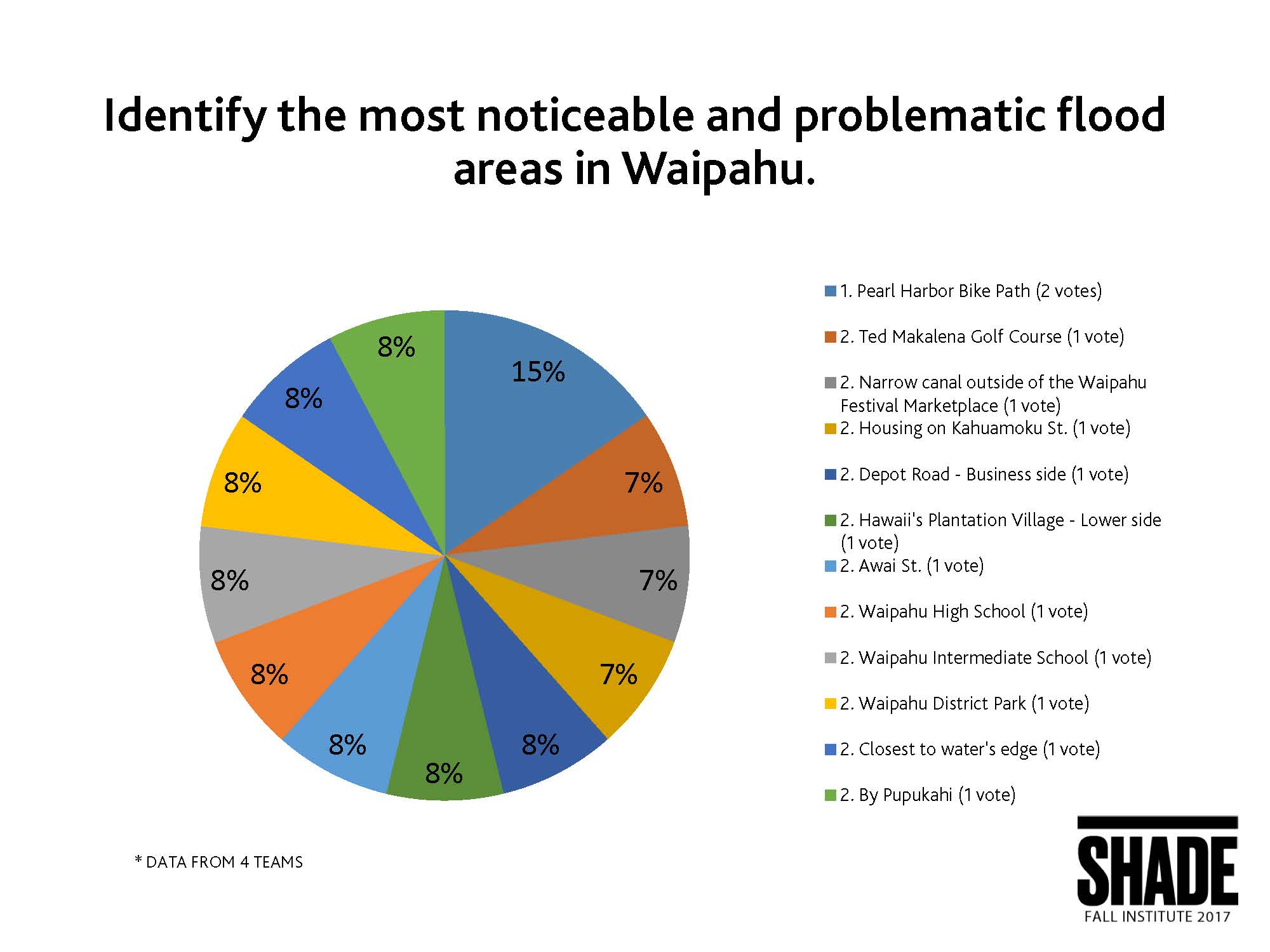

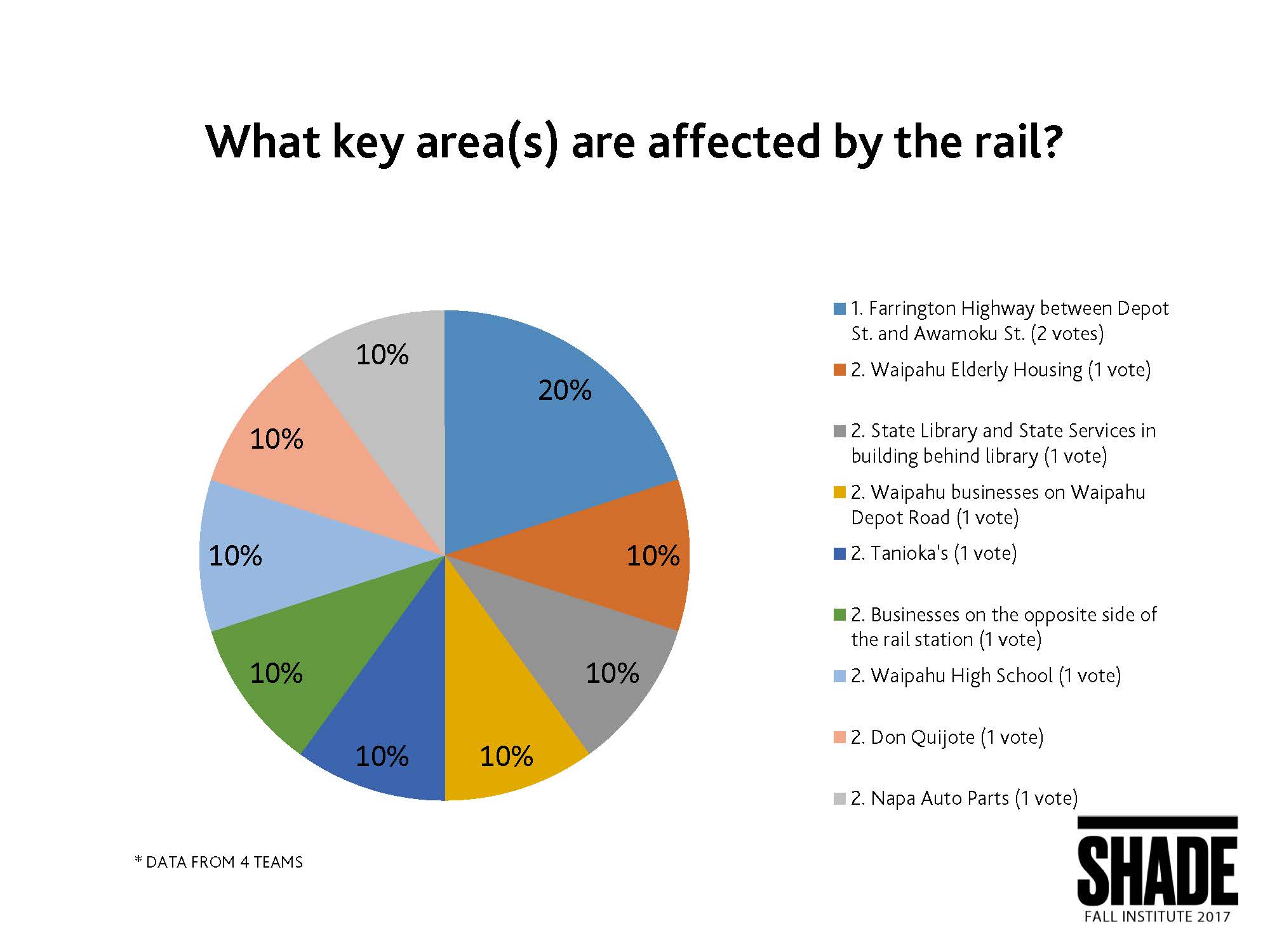
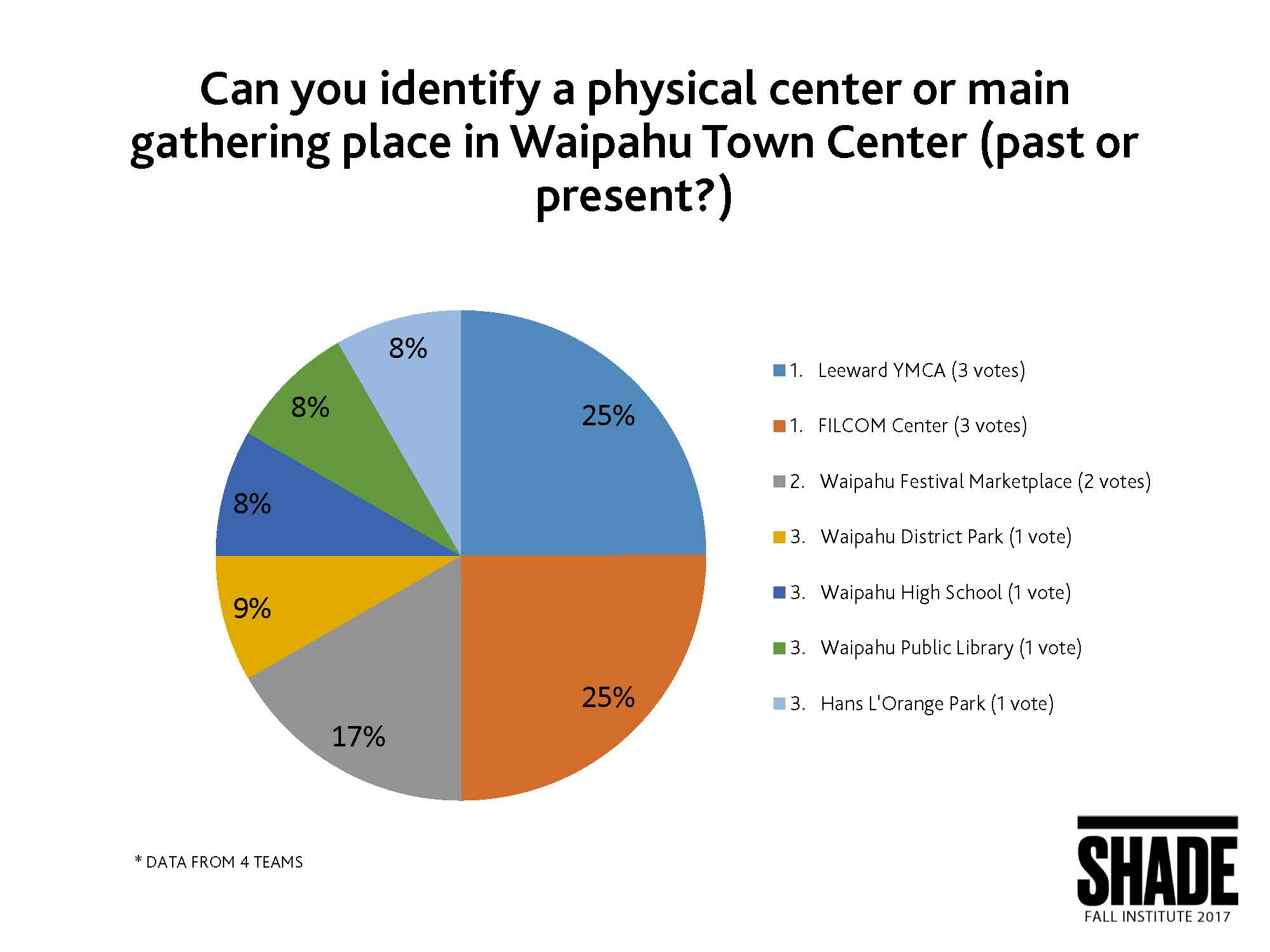
2016 SUMMER INSTITUTE
This summer, SHADE Institute focused their summer on redesigning and re-envisioning the community of Waipahu with Kapili Waipahu, which consisted of two project areas: the Celebrate Waipahu TOD Action Plan and the Waipio Point Access Road Accessible Pathway.
Waipahu Community Meeting
Members and SHADE interns at the Waipahu Aloha Clubhouse
Kapili
In Hawaiian, the word kapili means "unite" or "put together". We strive to strengthen bonds within the community through planning and design.
Mill Smokestack and Generator Building
Hans L'Orange Park
Source: Waipahu Town Heritage Area Plan, 1996
Celebrate Waipahu TOD Action Plan
This summer, SHADE Institute partnered with PBR Hawaii and Associates Inc. and the City and County of Honolulu Department of Planning and Permitting to create a plan for the community of Waipahu in preparation for the rail. In the preliminary analysis, the summer interns spent some time analyzing and studying the various existing conditions of the Waipahu community.
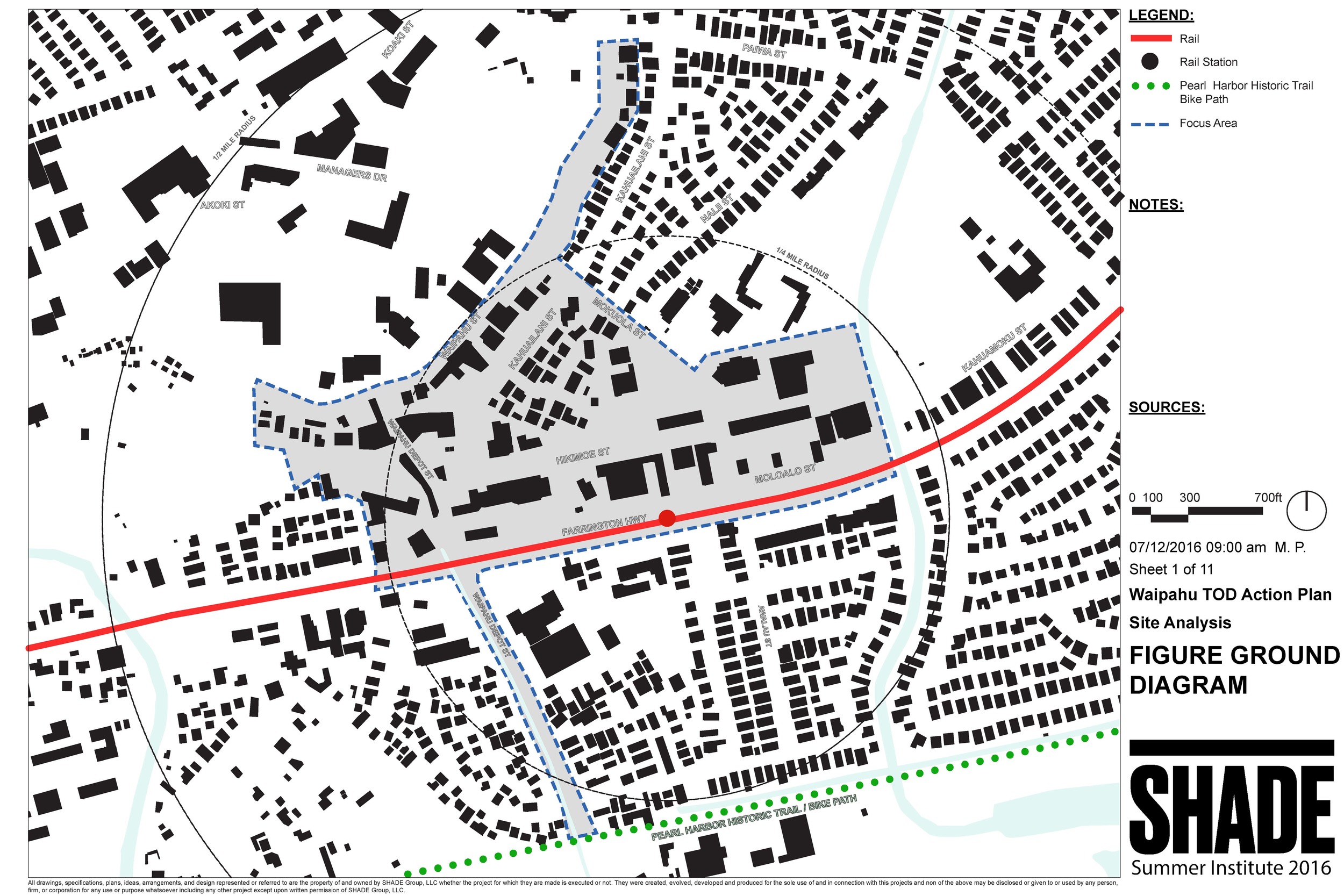
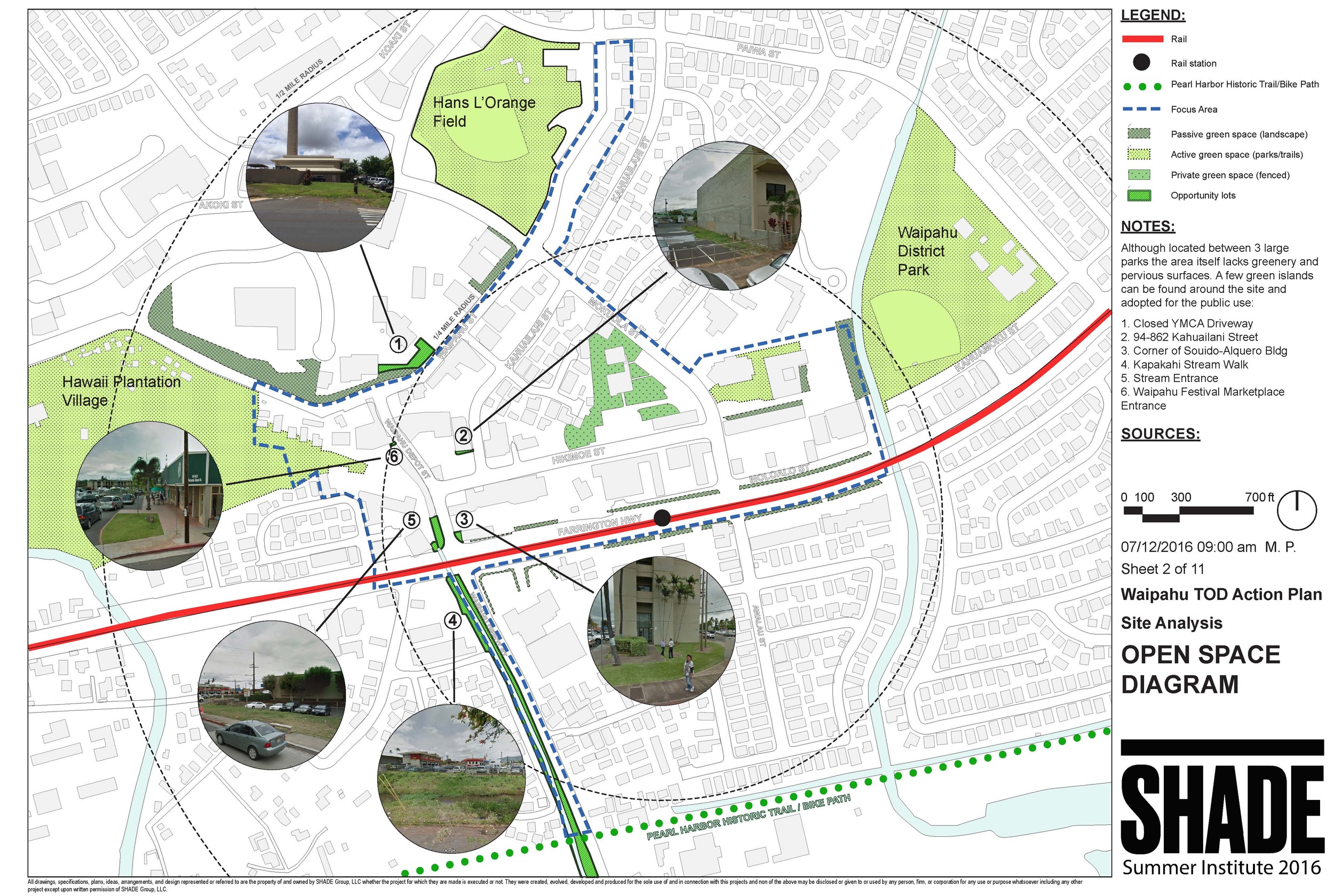
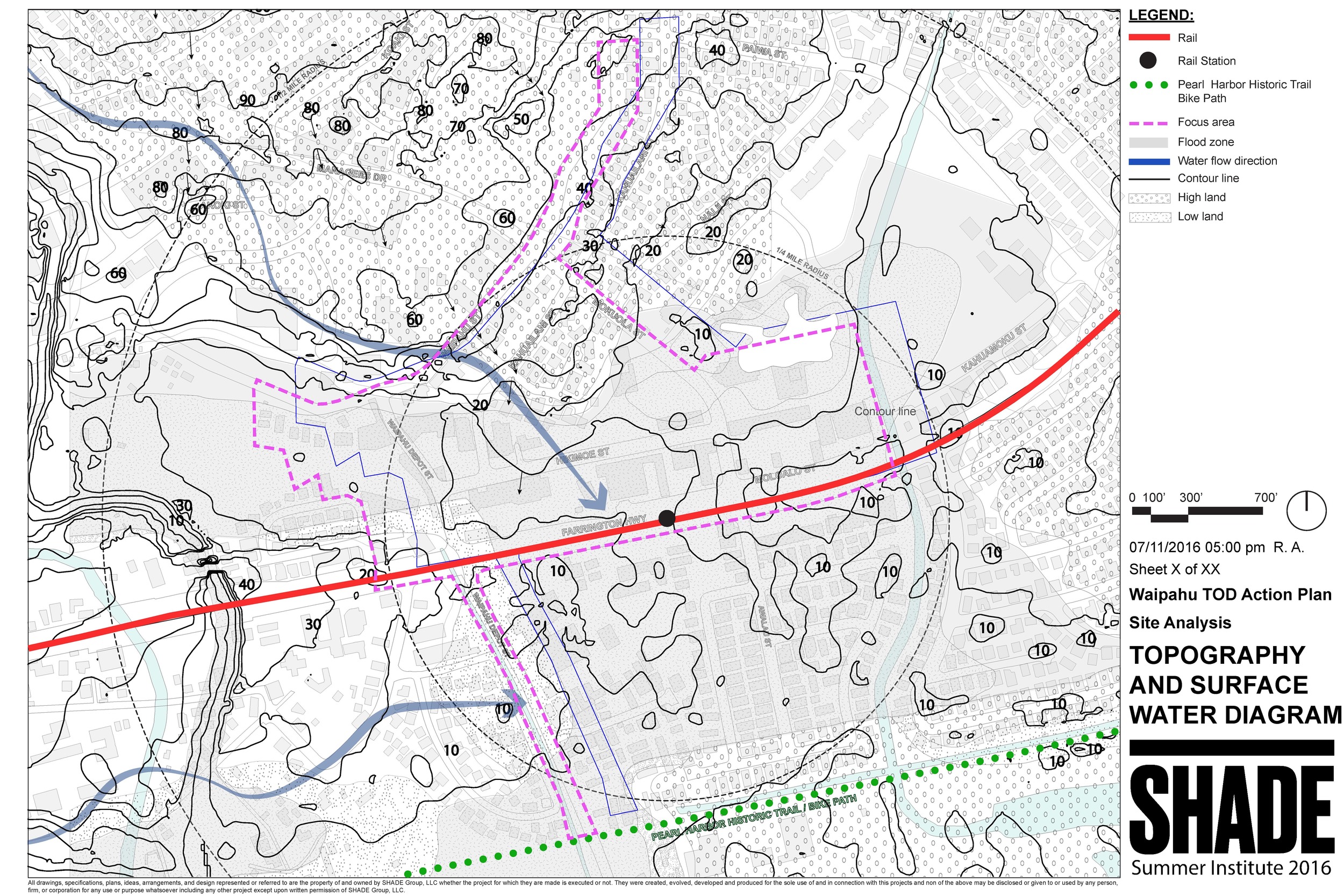
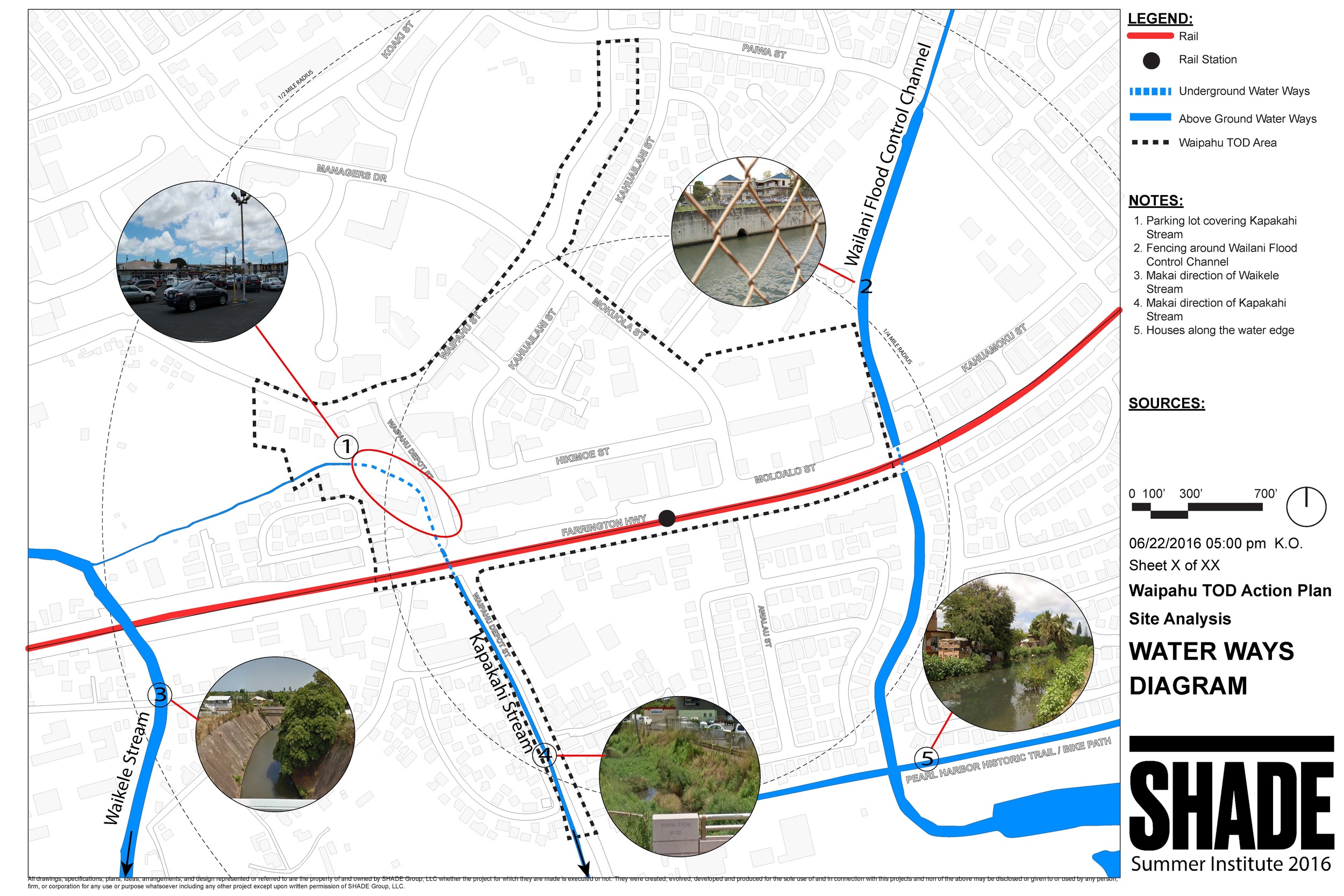
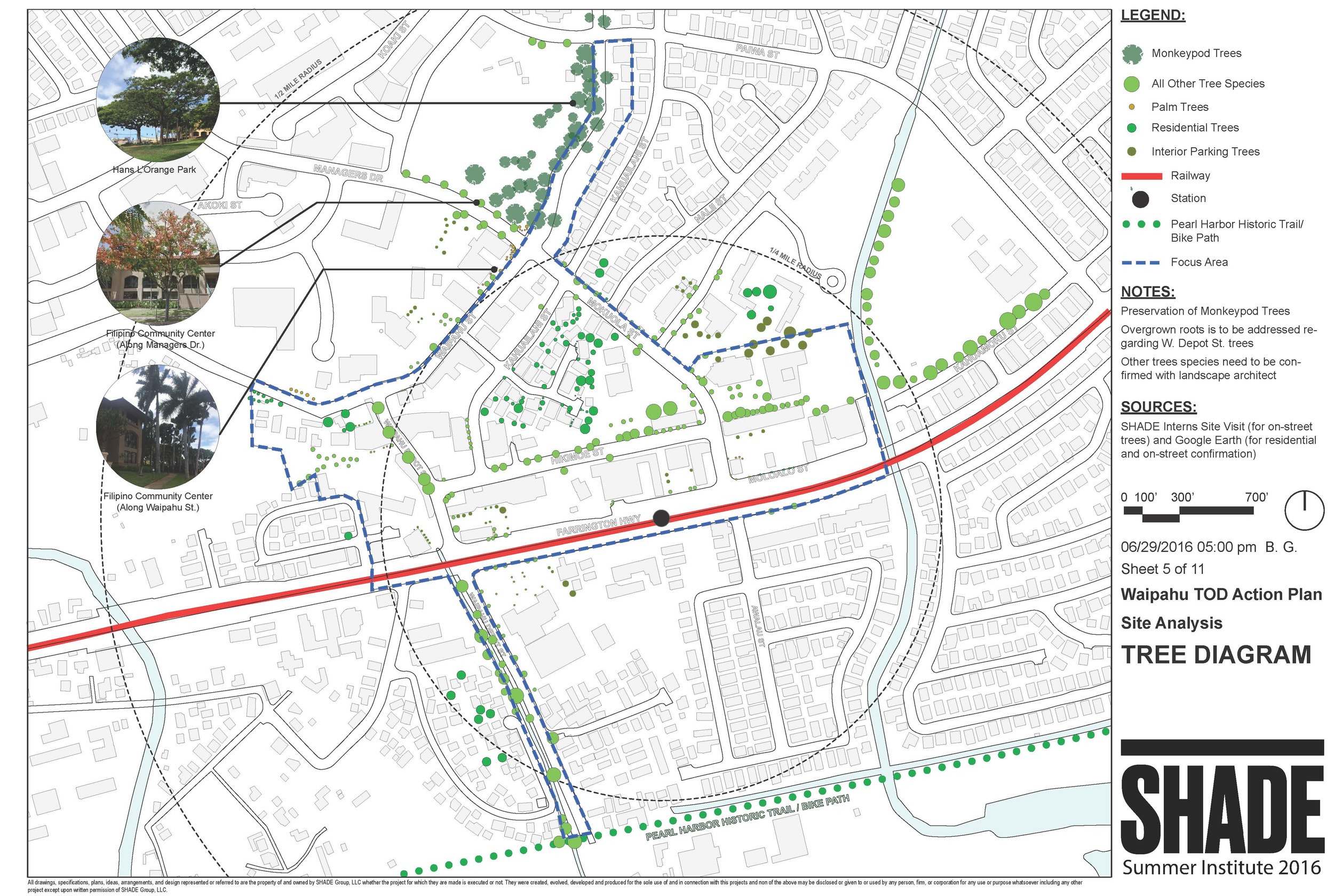


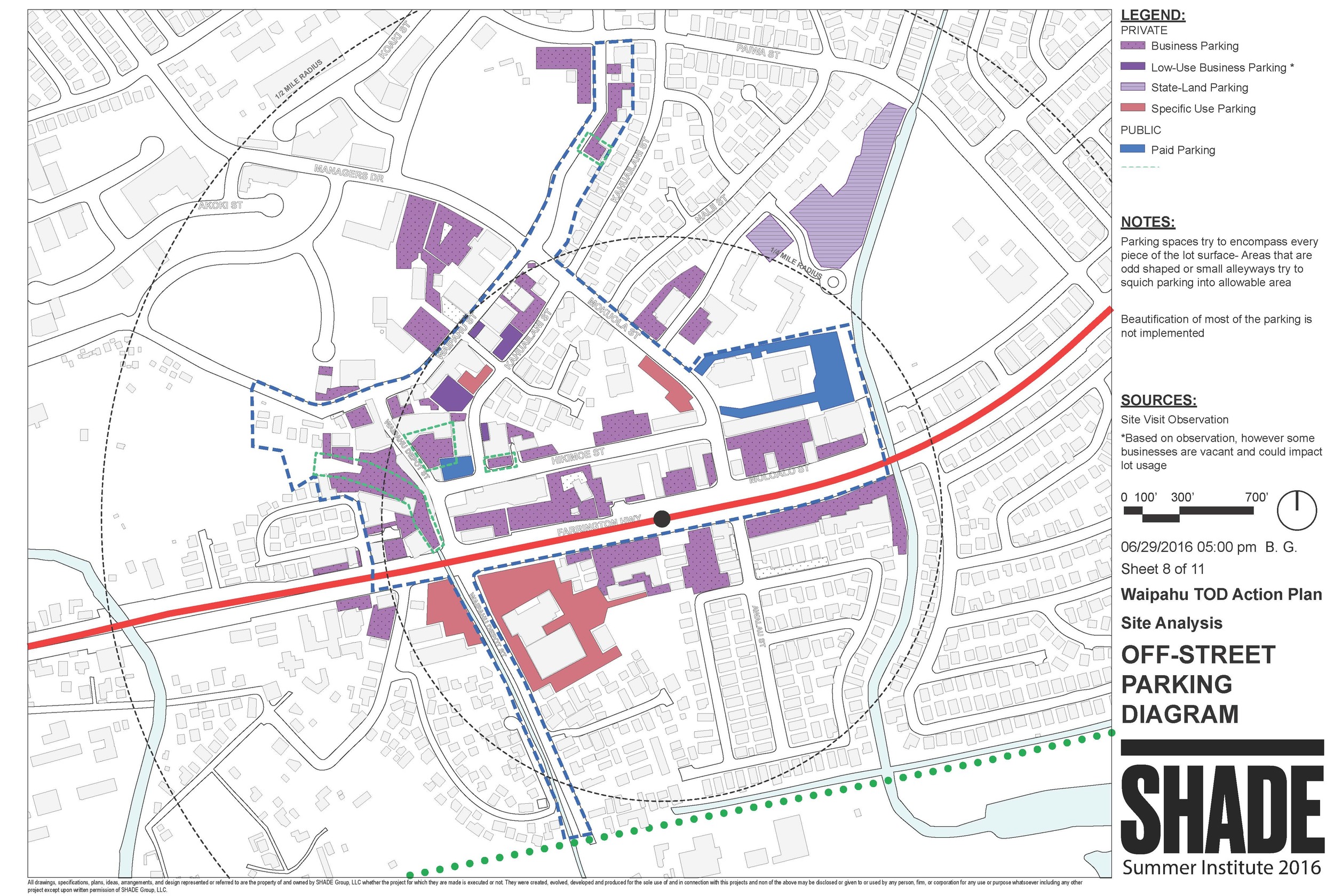

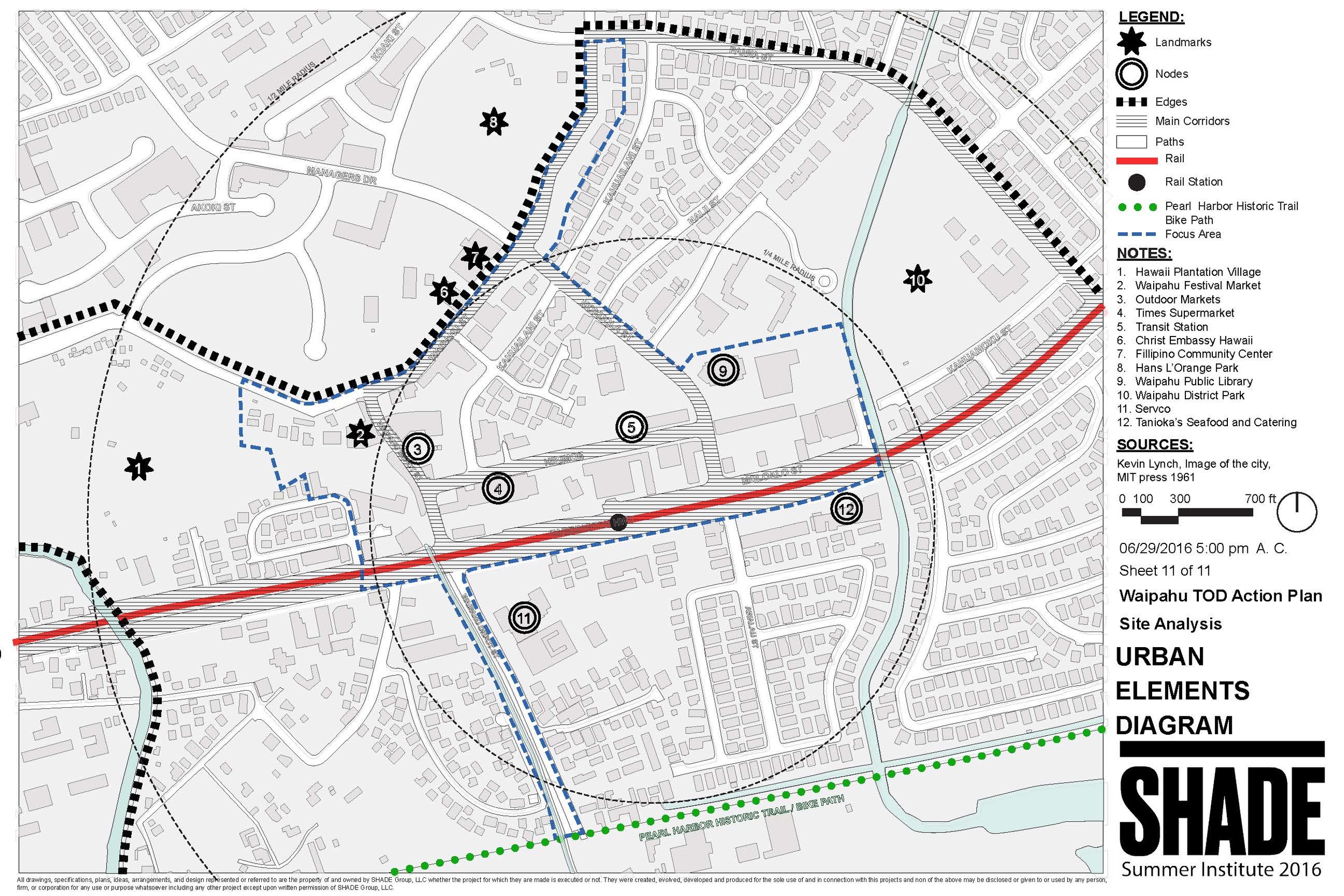
At this point, under the support and supervision of PBR and the DPP, the interns were able to justify and produce project areas for three different zones within the Waipahu TOD Action Plan.
ZONE 1: Hikimoe Street & Moloalo Street
Zone 1 was a curation of facade improvements and the implementation of multi-use shared lanes for bike riders and pedestrians. The vision for this area was to have an interactive space for pedestrians to use.
Zone 2: Waipahu Street & Hans L'Orange Park
Zone 2 was comprised of the redevelopment and improvements along Waipahu Street and Hans L'Orange Park, as well as a connection strategy to Hawaii Plantation Village.
Zone 3: Waipahu Depot Street & Pearl Harbor Historic Trail
Zone 3 focused on the integration of shared-use lanes for pedestrian and bike activities with consideration to the connection of the OR&L Pearl Harbor Historic Trail pathway. Interns were tasked at integrating complete streets, landscaping and facade improvements for the businesses lining Waipahu Depot Street.
Waipio Point Access Road Accessible Pathway
When thinking about redesigning for humanity, it is important to consider everyone. In this project, interns were tasked with designing a pathway that is accessible to not only pedestrians, but to bike riders and Waipahu Aloha Clubhouse members. The pathway starts across the streets of Farrington at the bus stop, and extends towards the Clubhouse. The long-term goal is to have the pathway connect to the Pearl Harbor Historic Trail, and eventually to the Waipio Peninsula Soccer Complex.
Map of the proposed concept map for the Waipio Point Access Road Accessible Pathway
Check out below to see the concepts and ideas behind the pathway.



